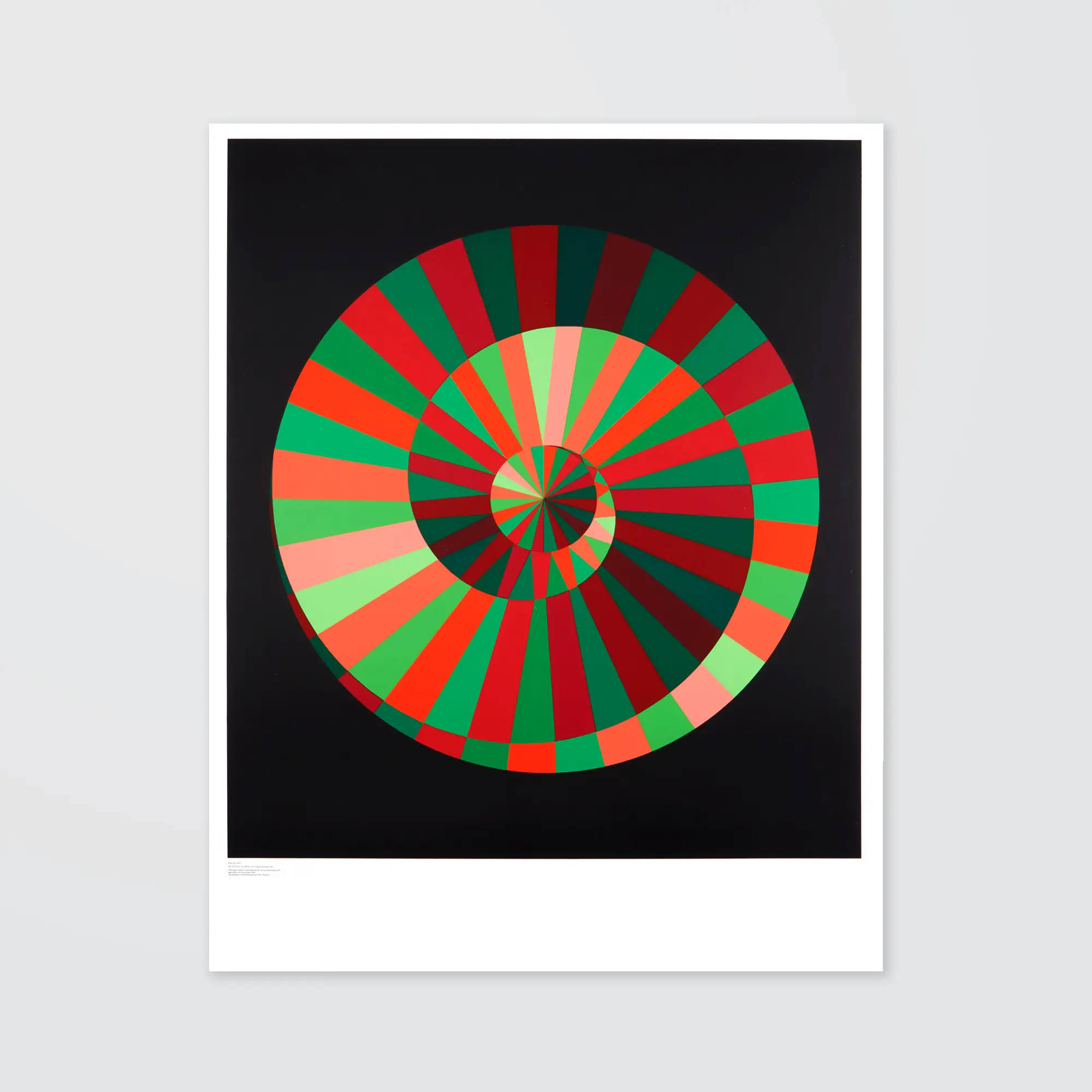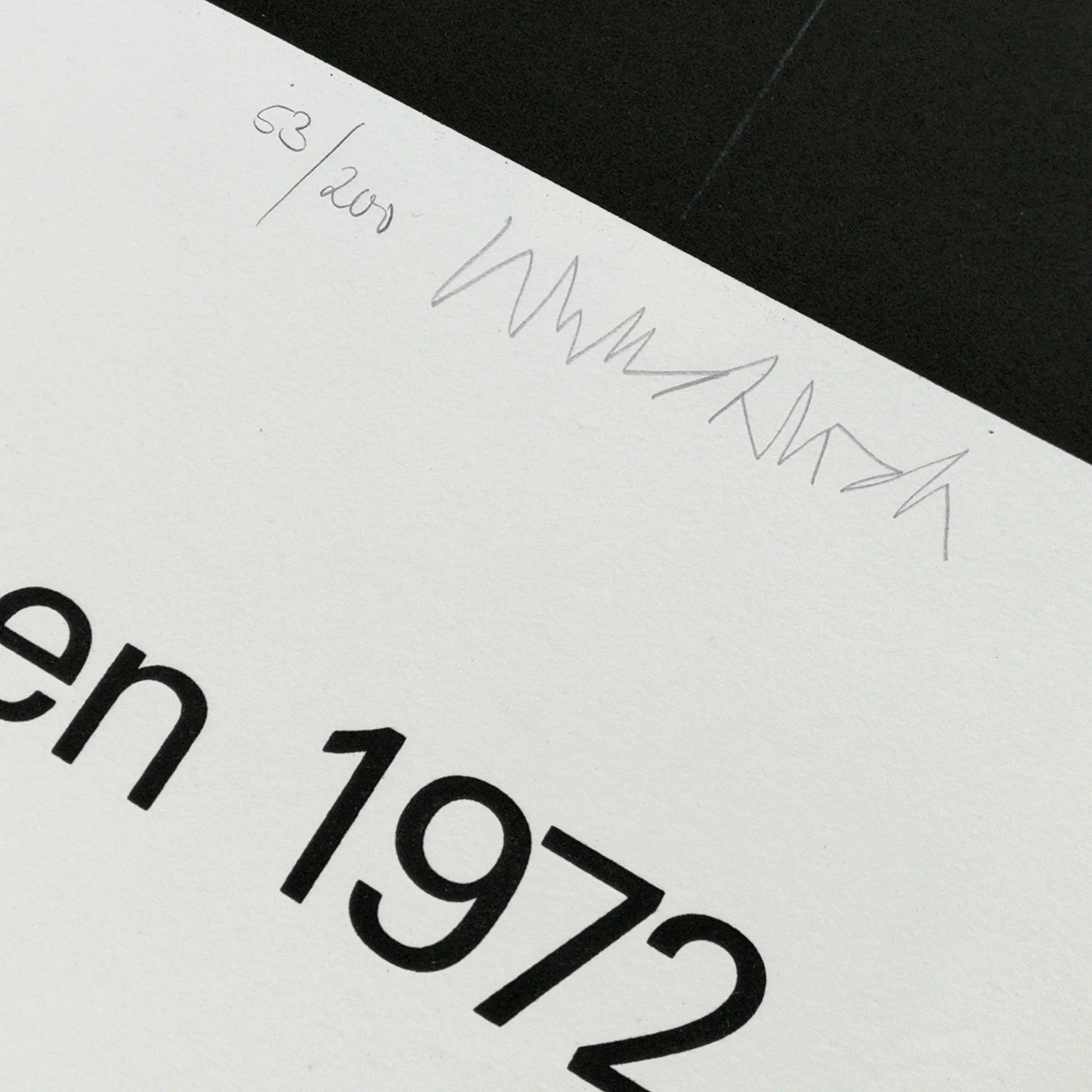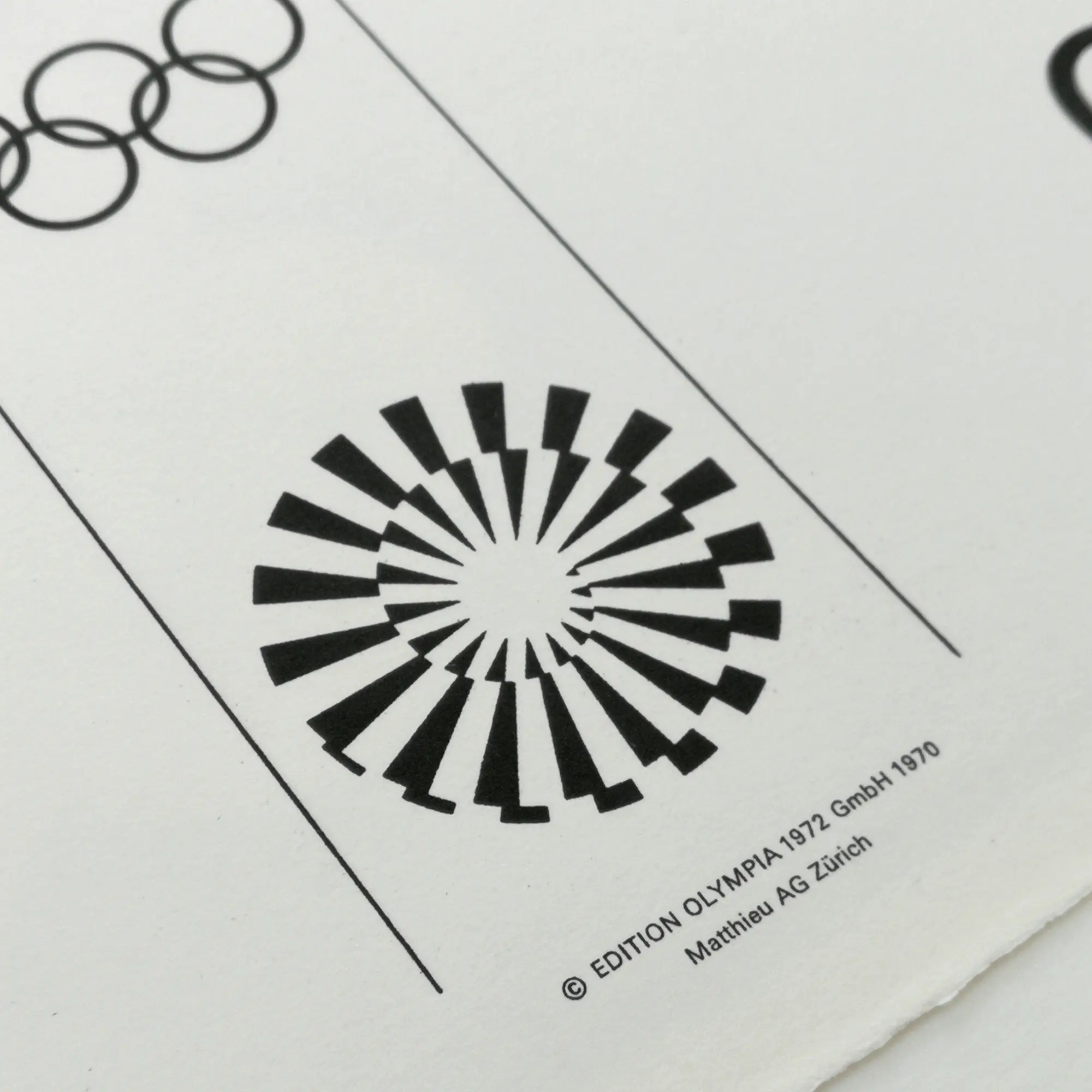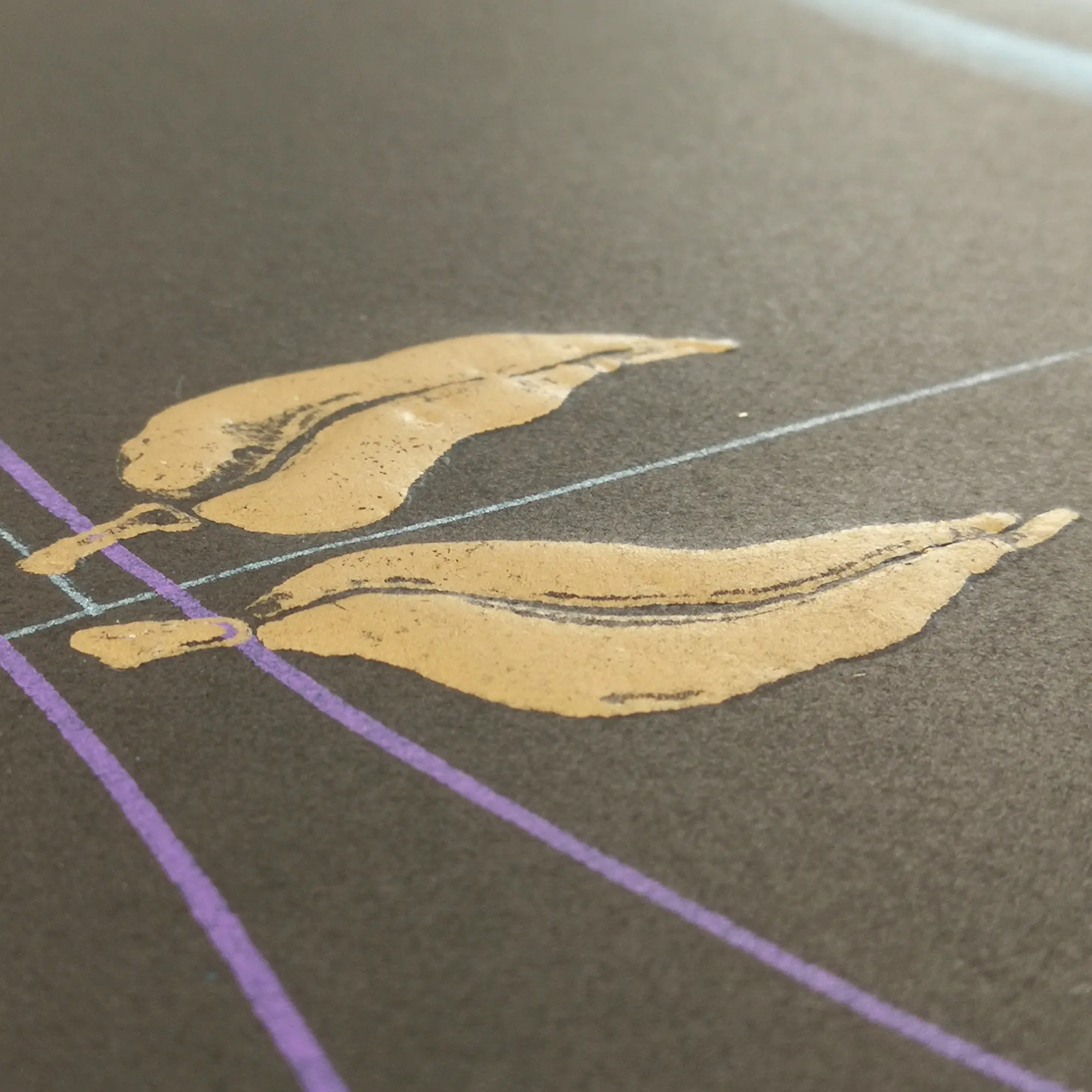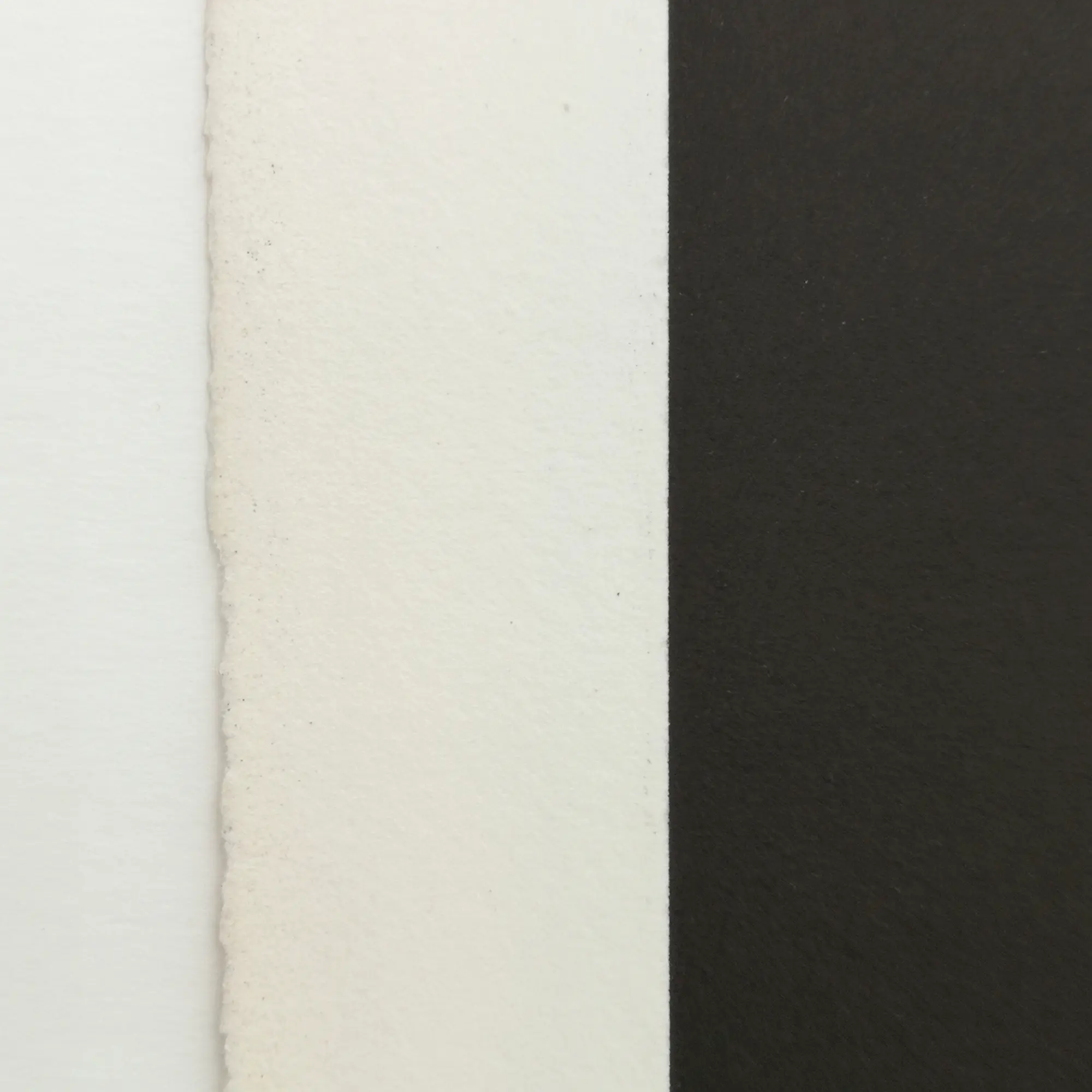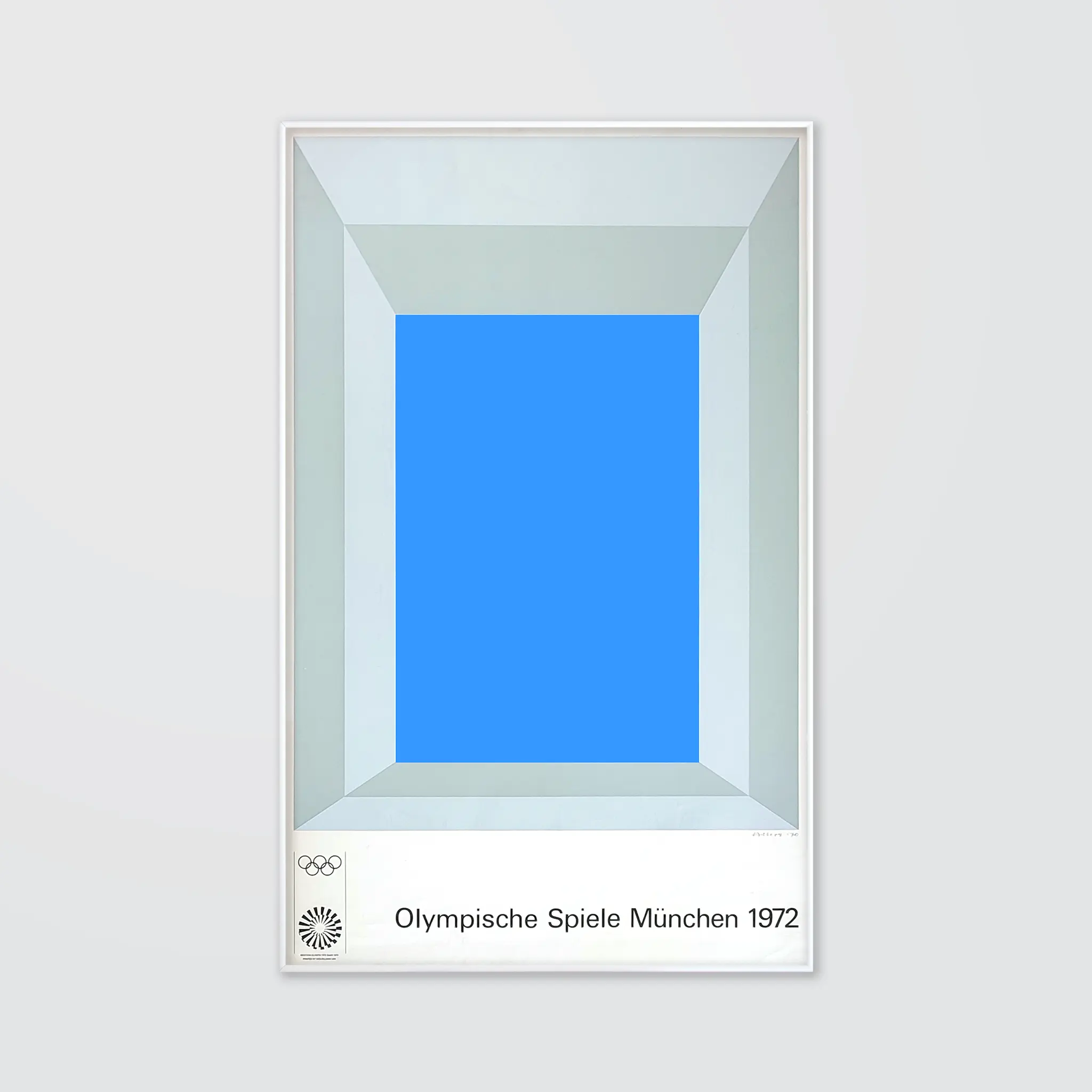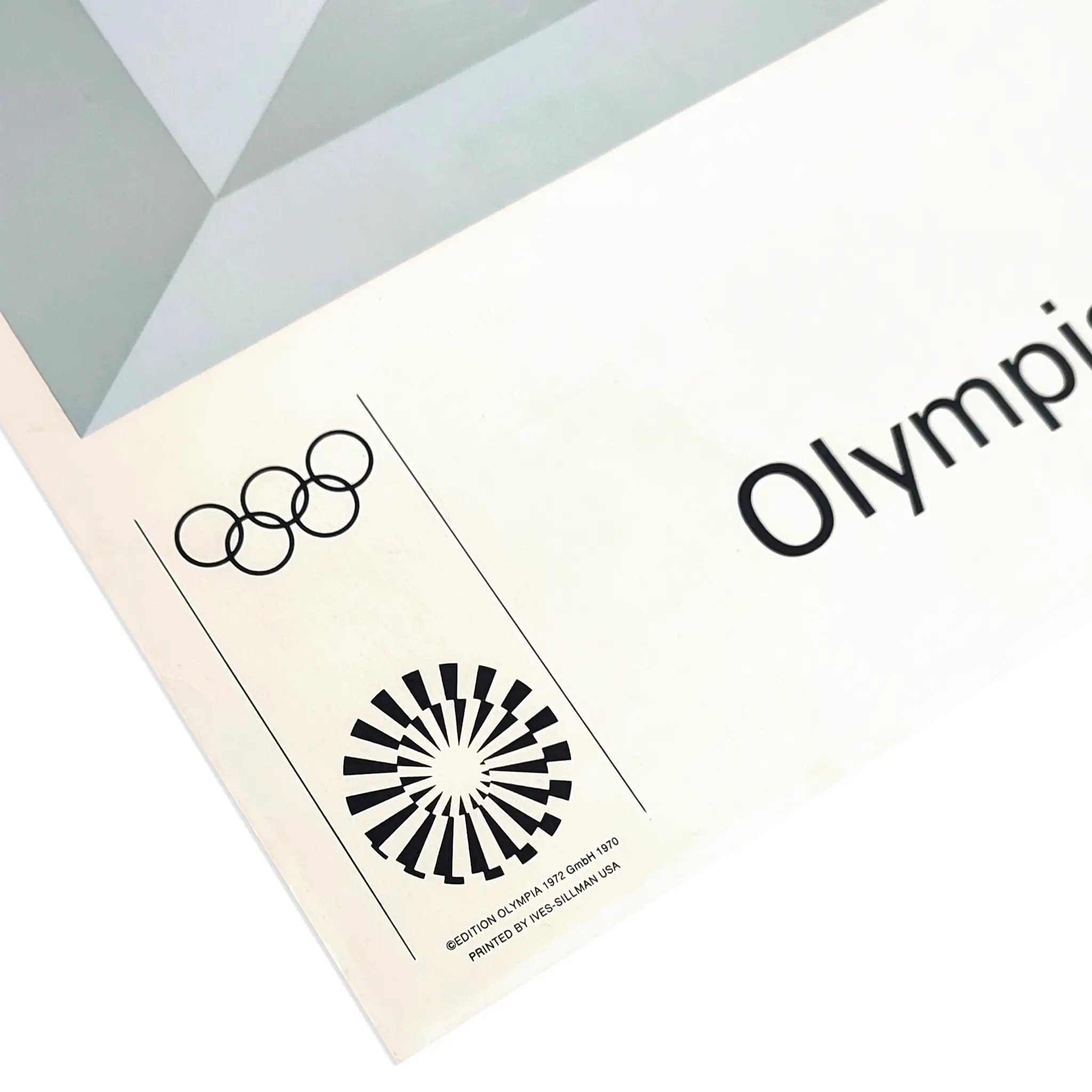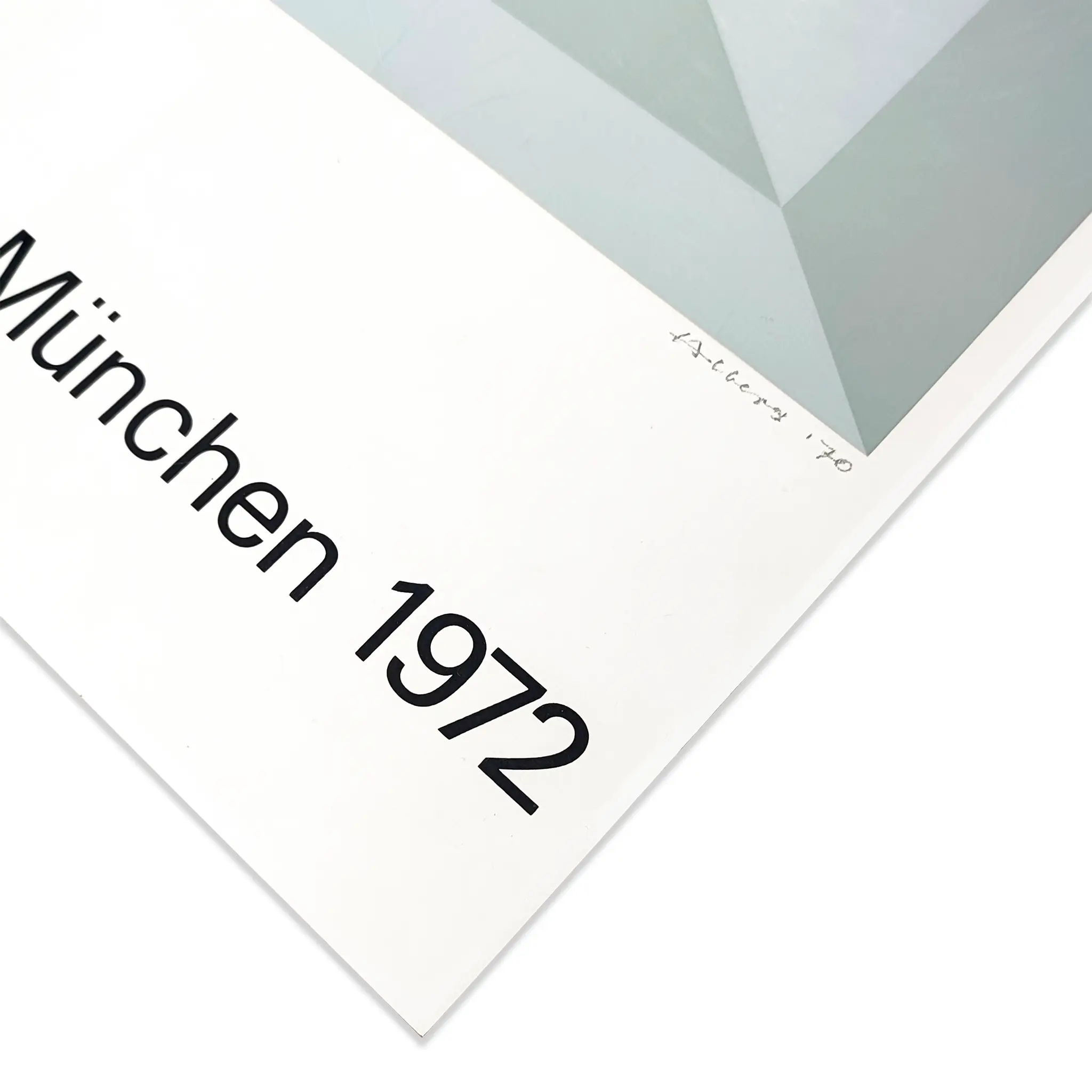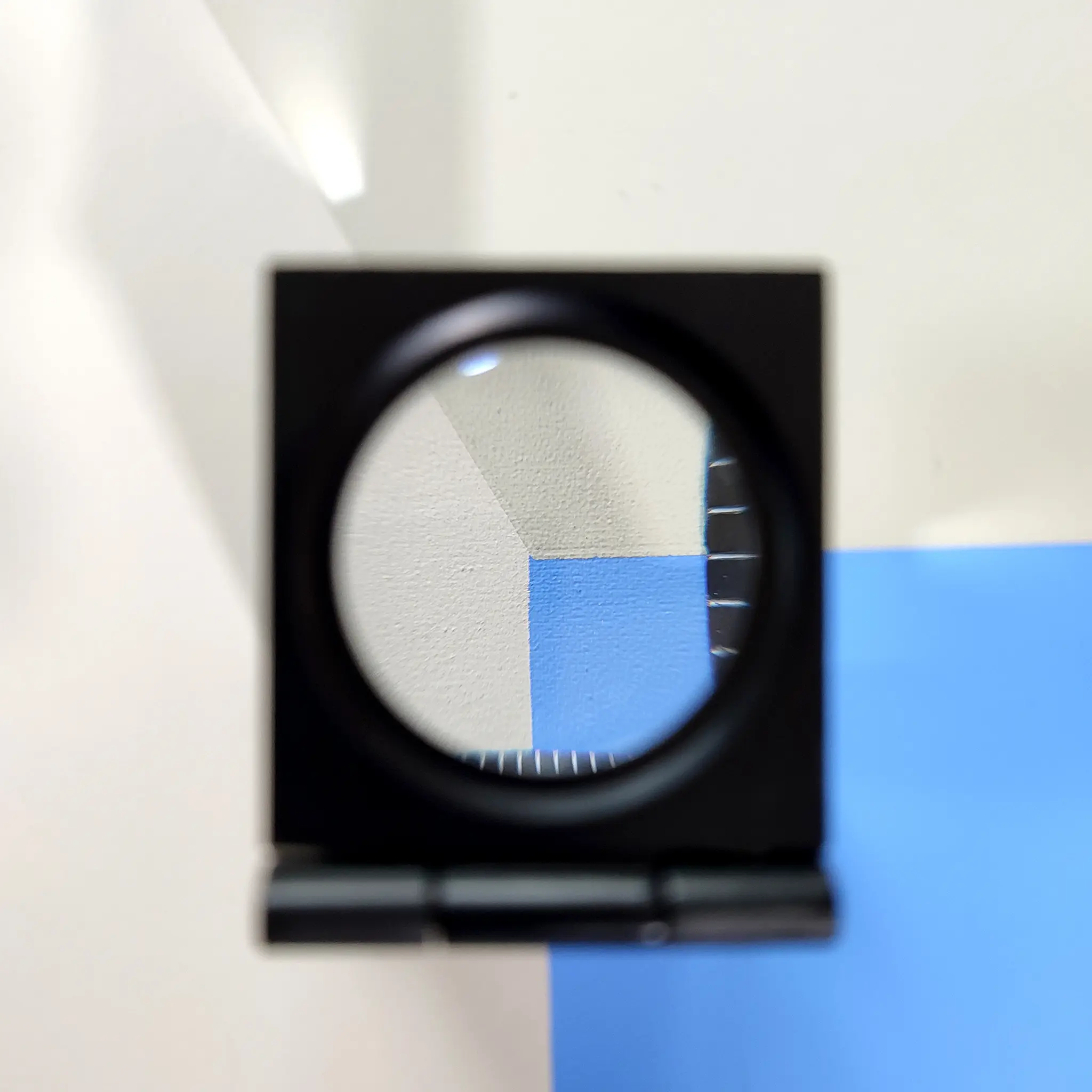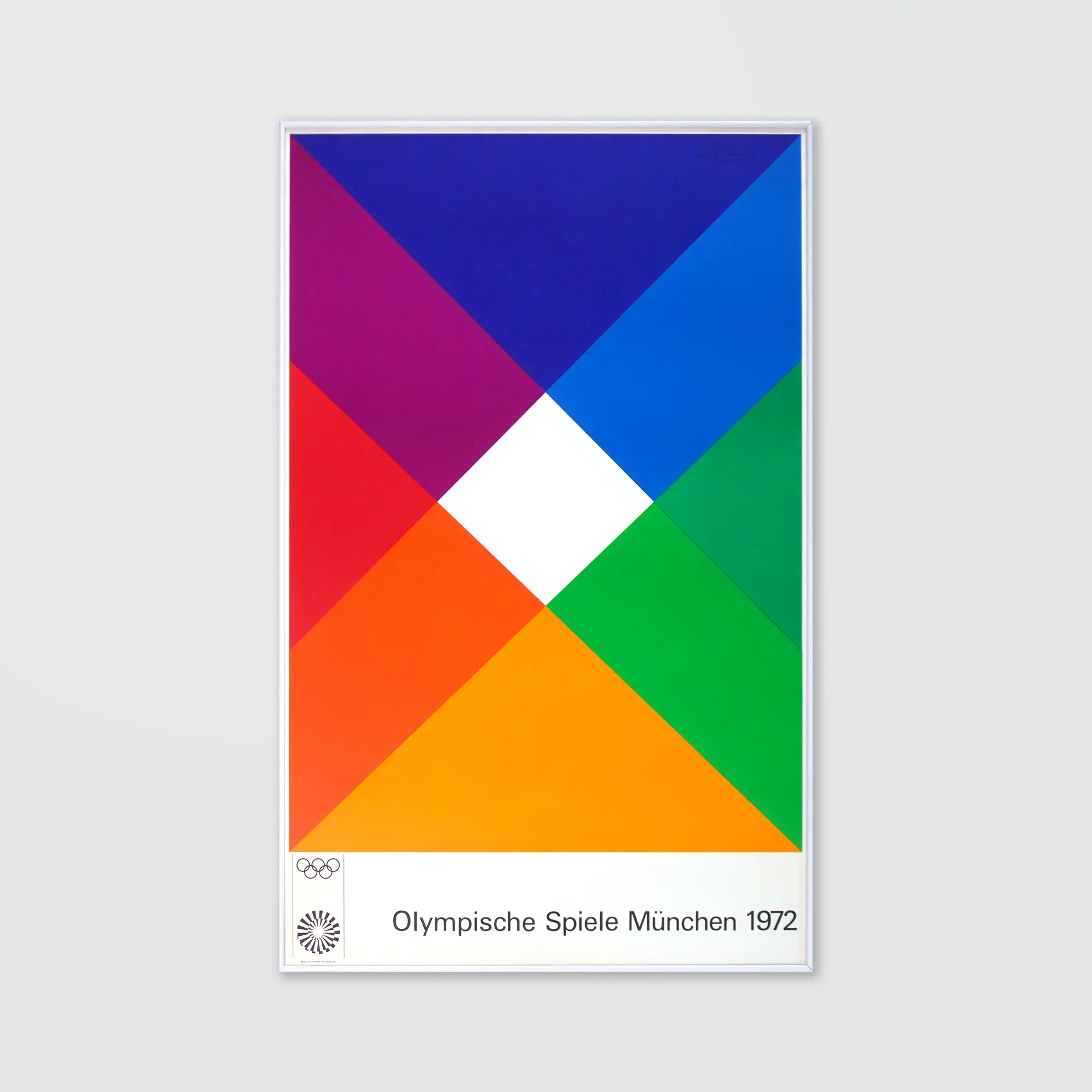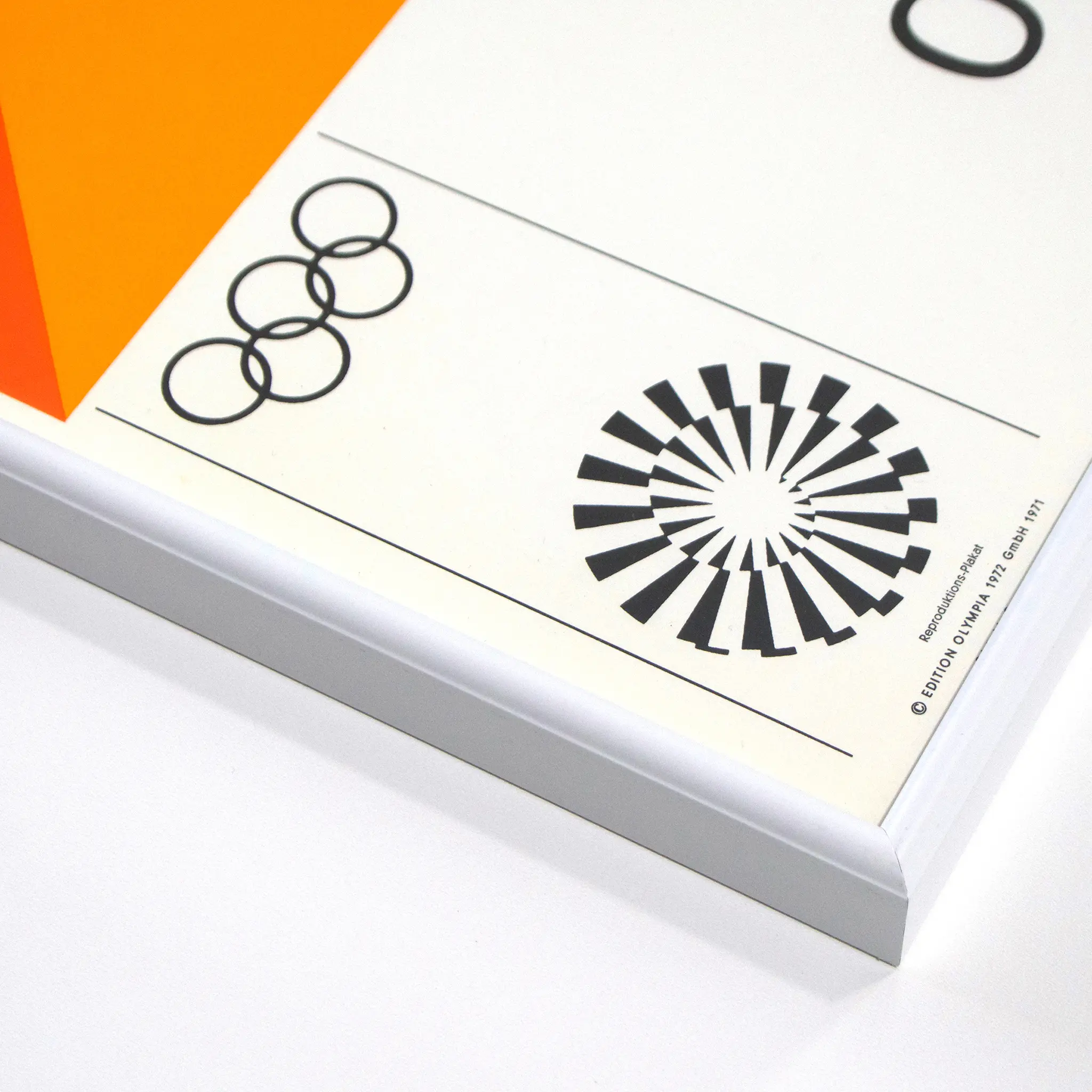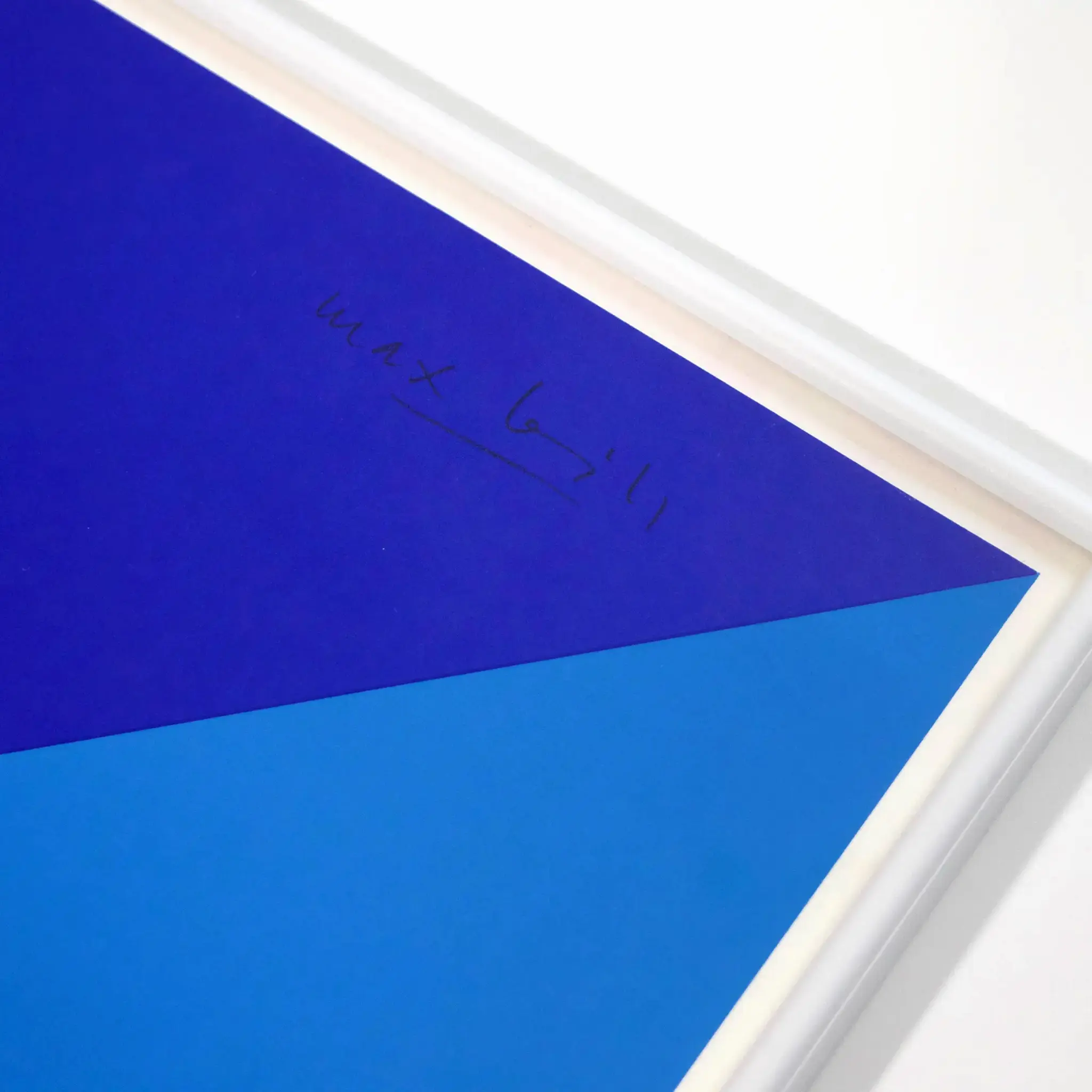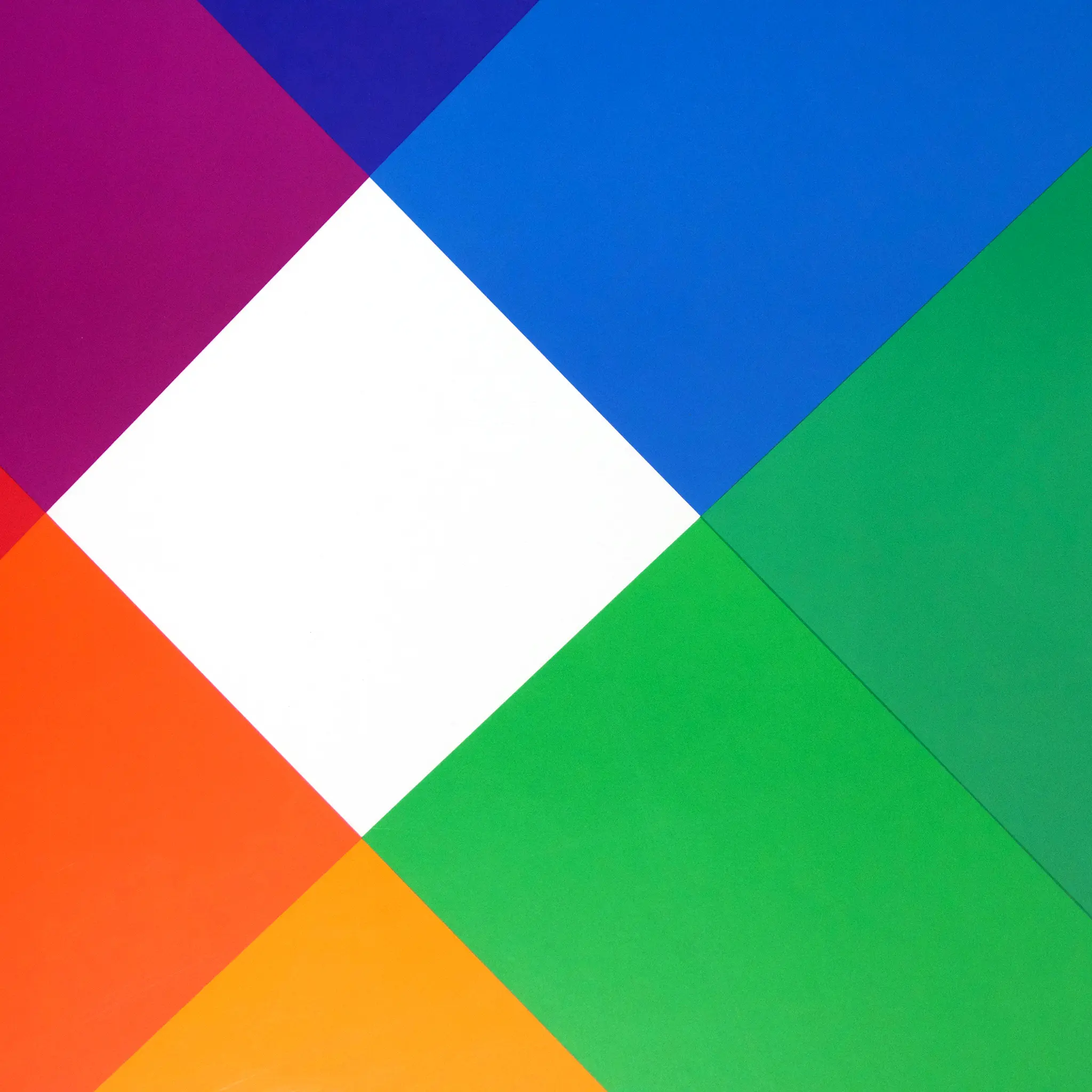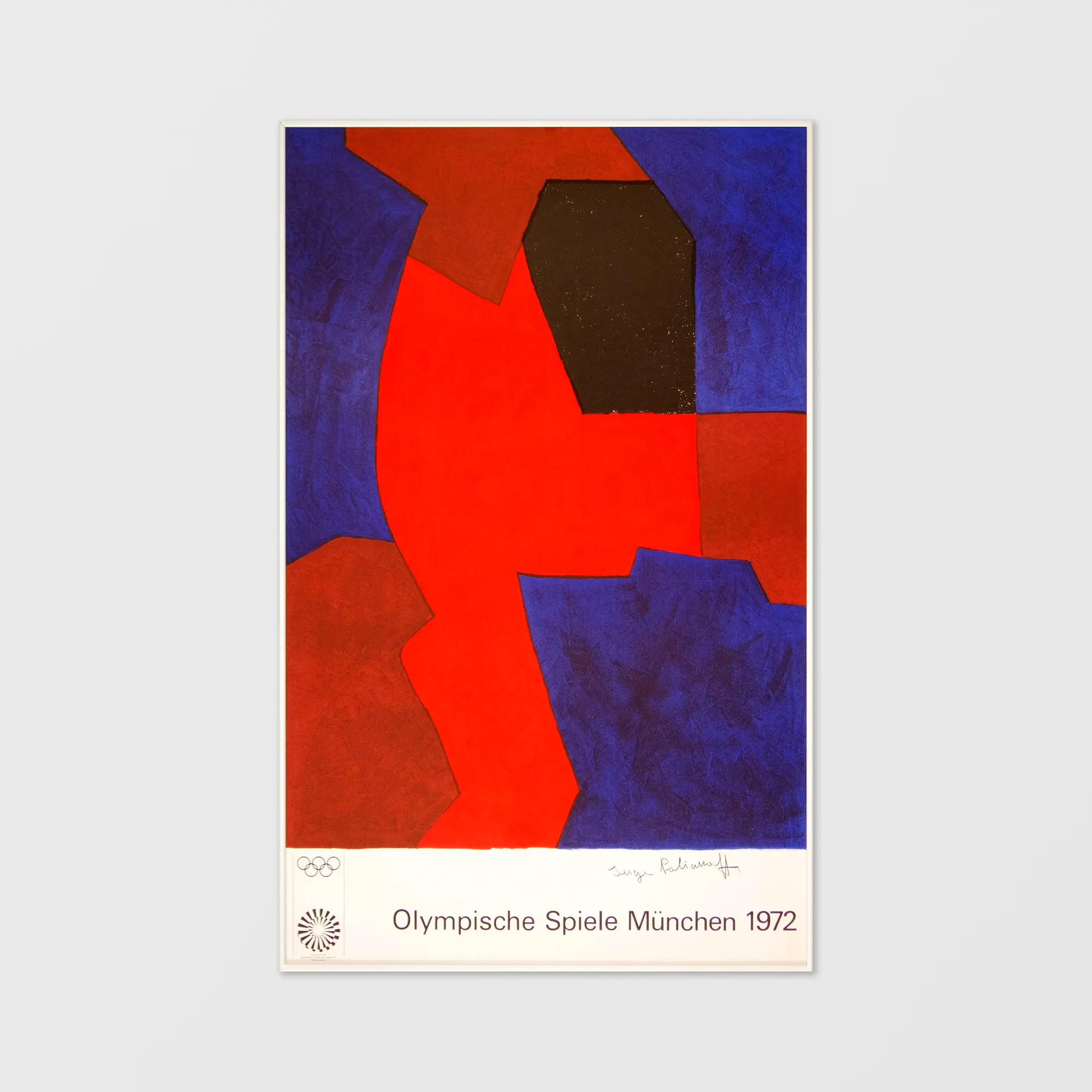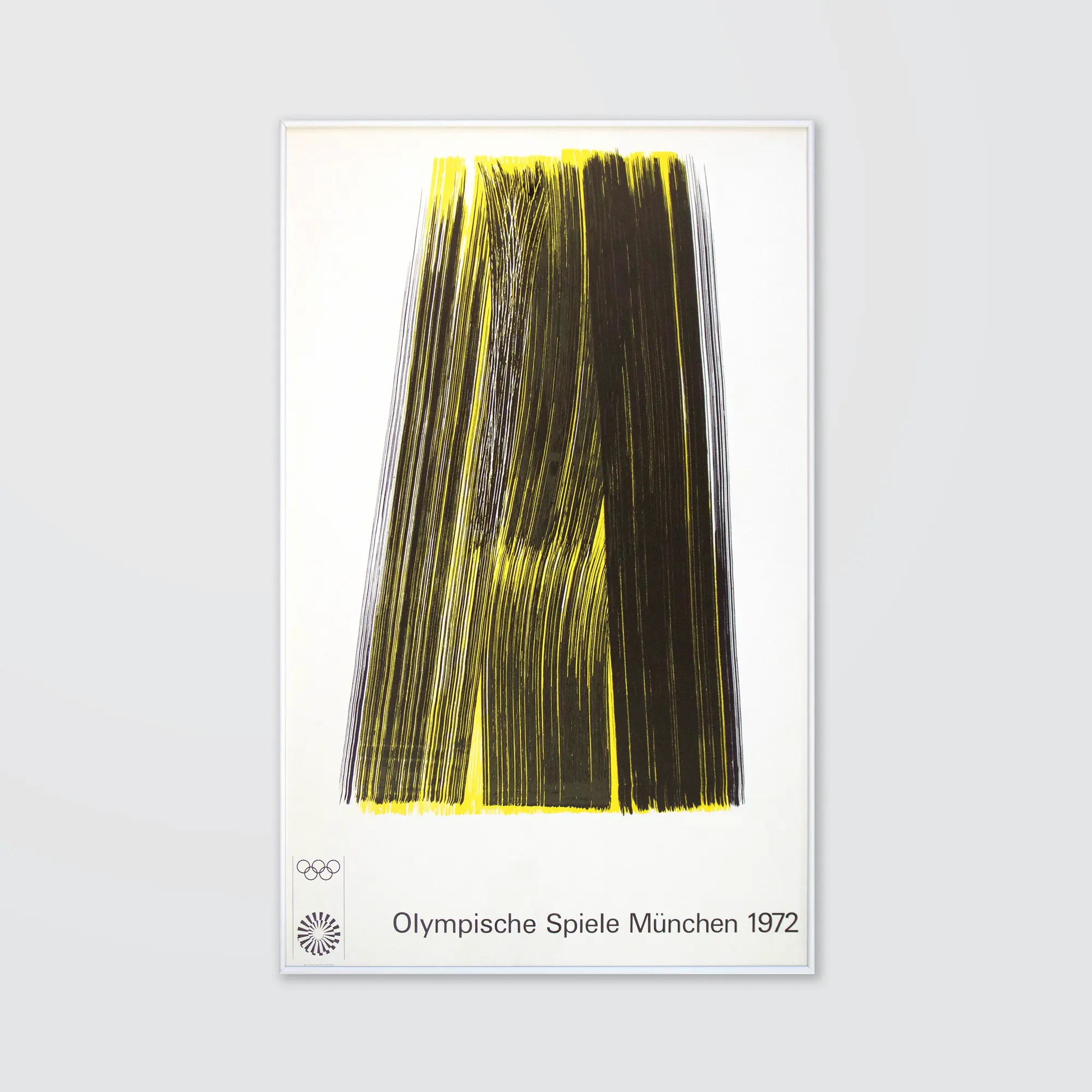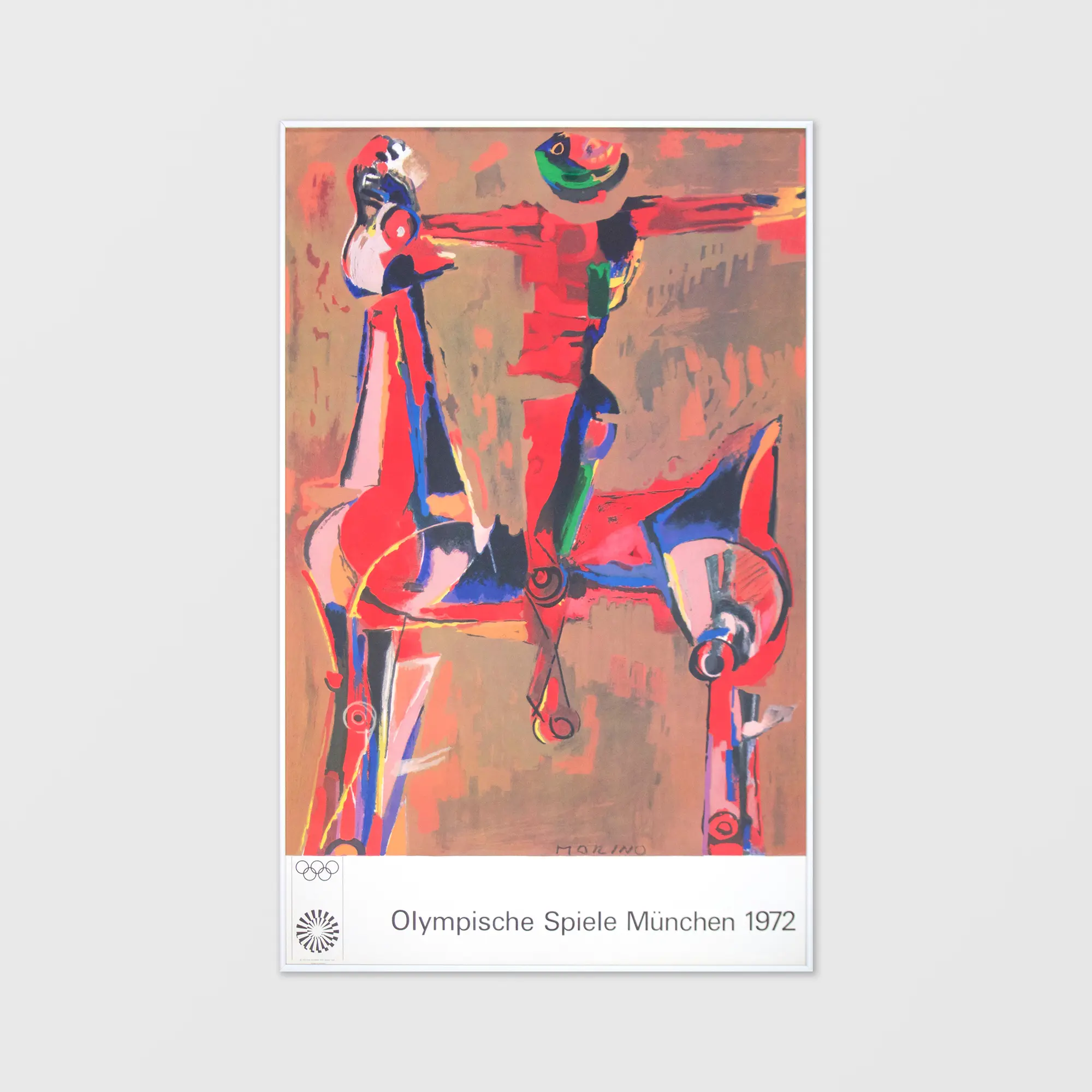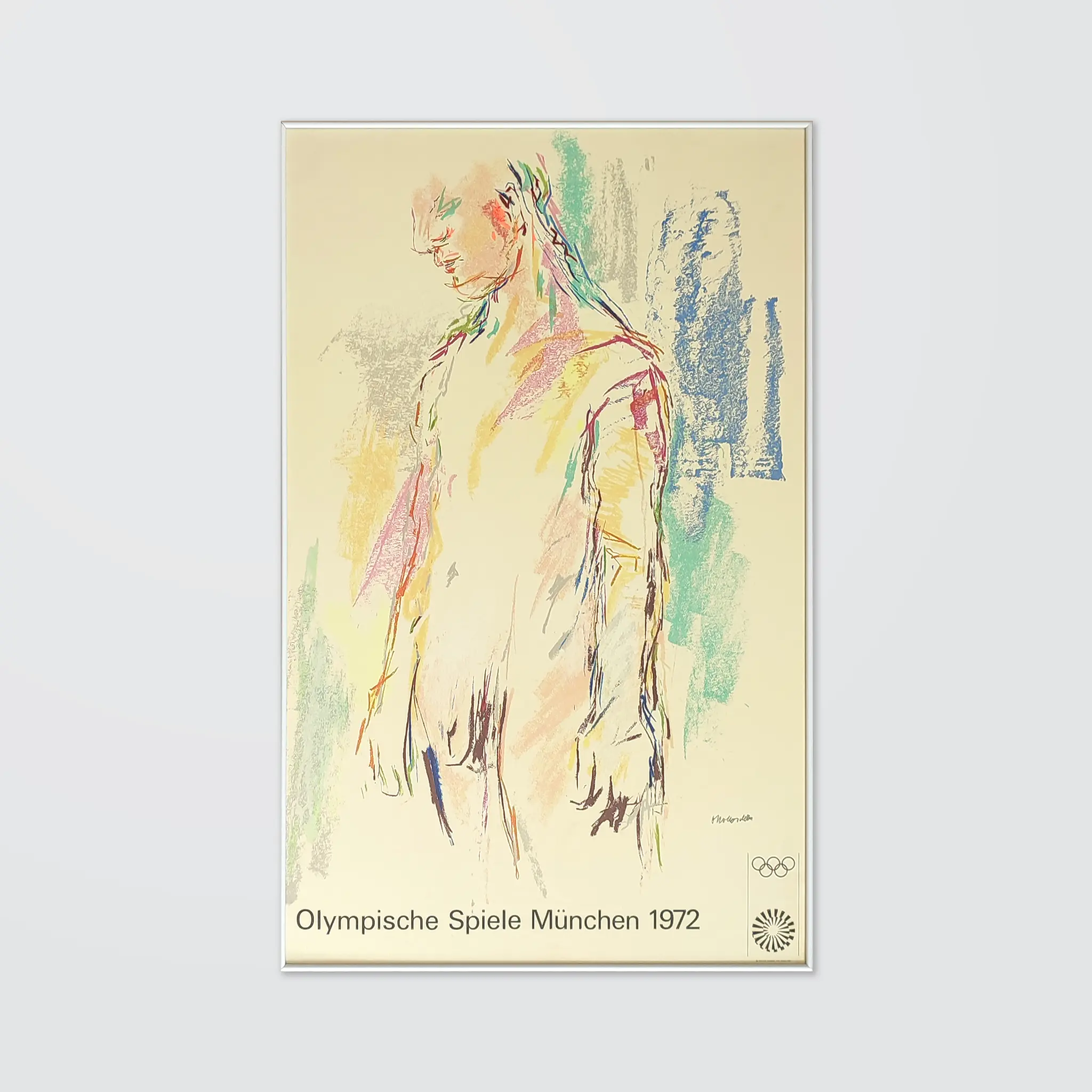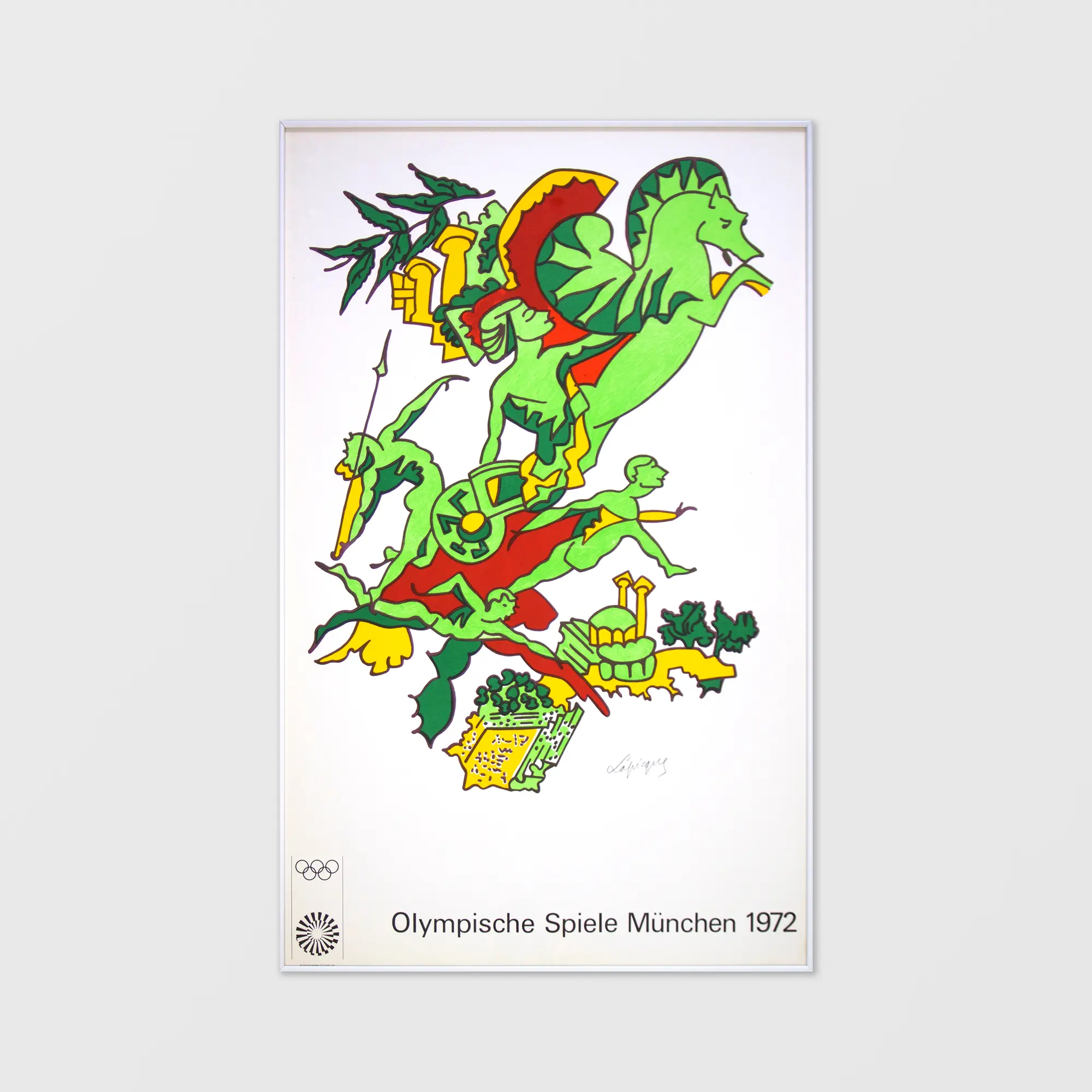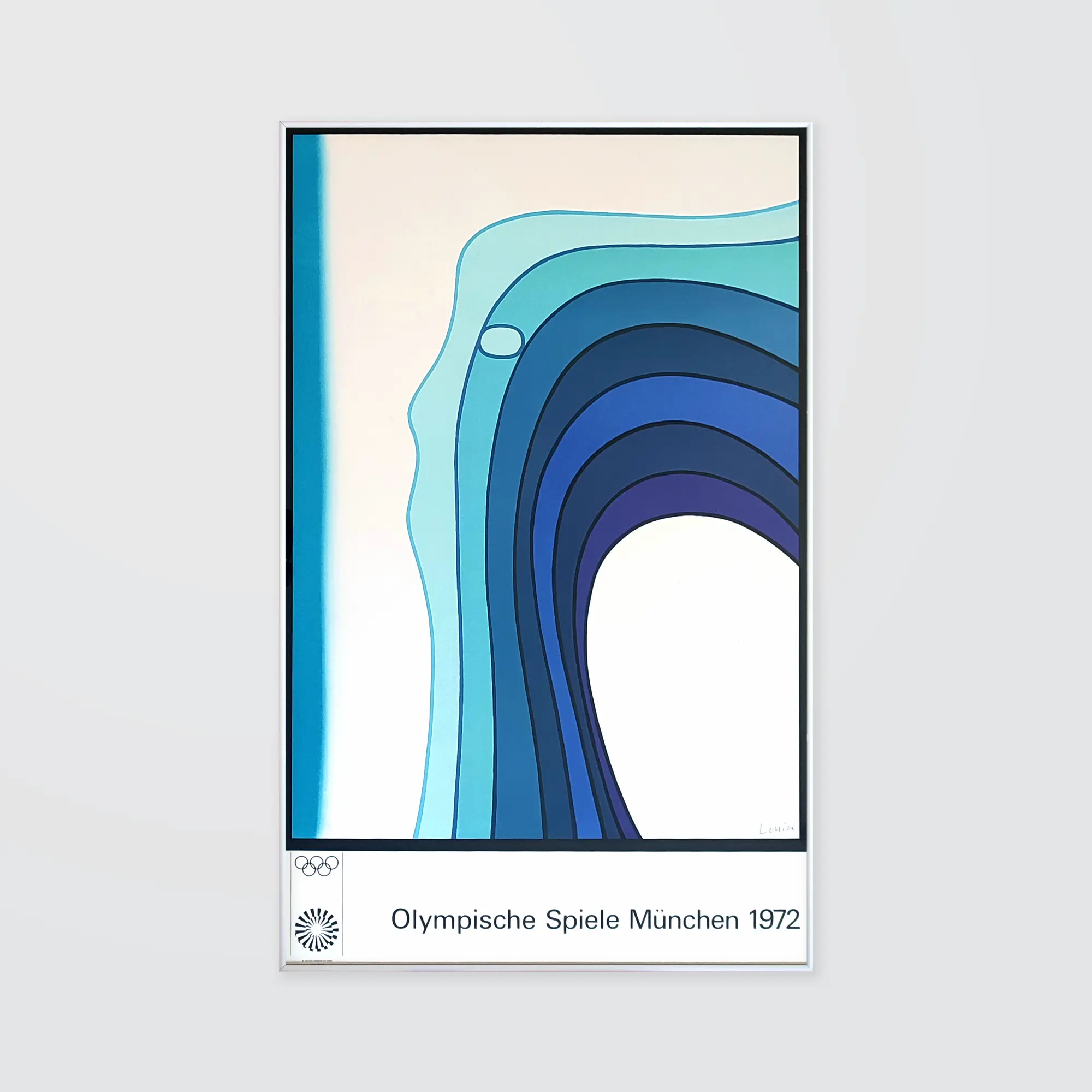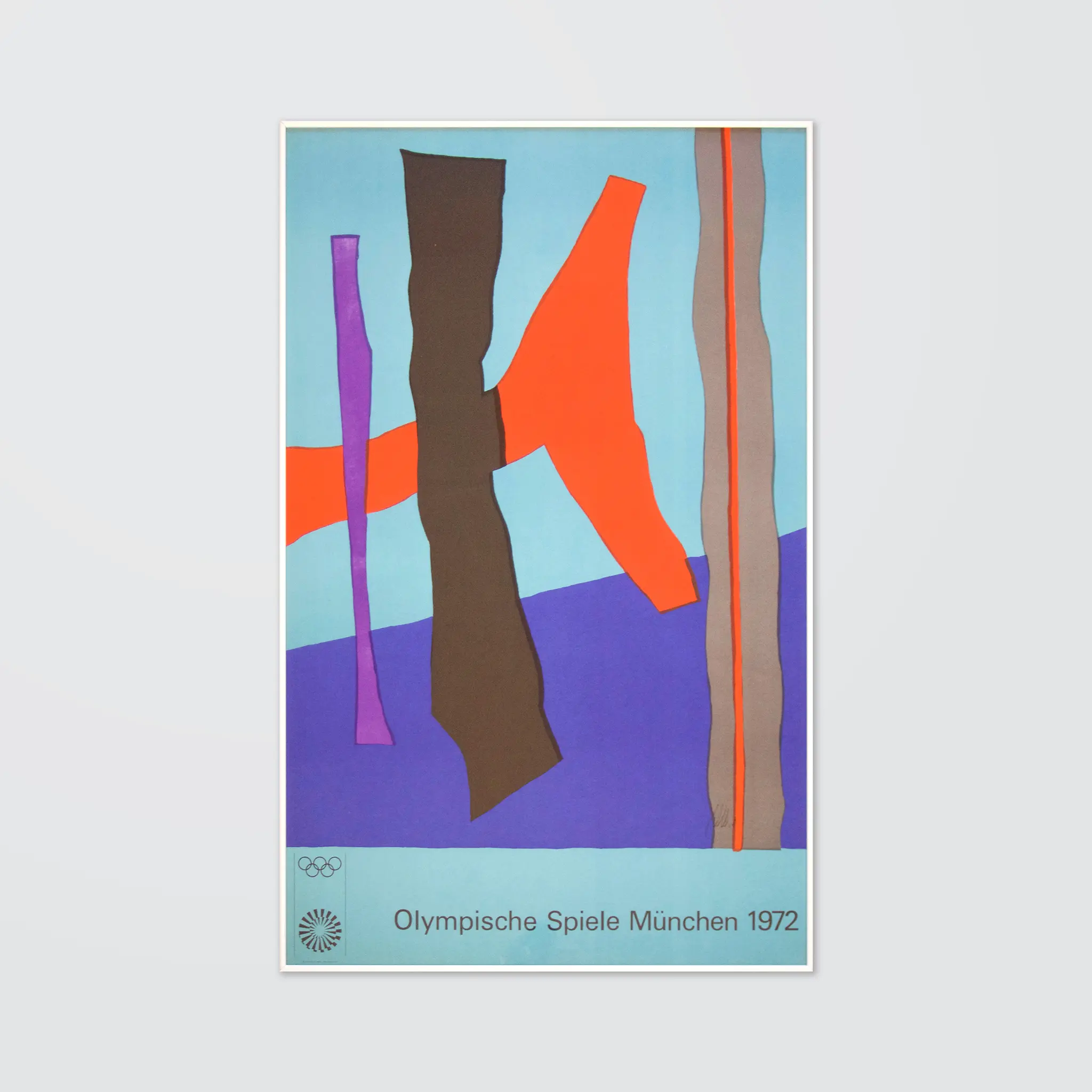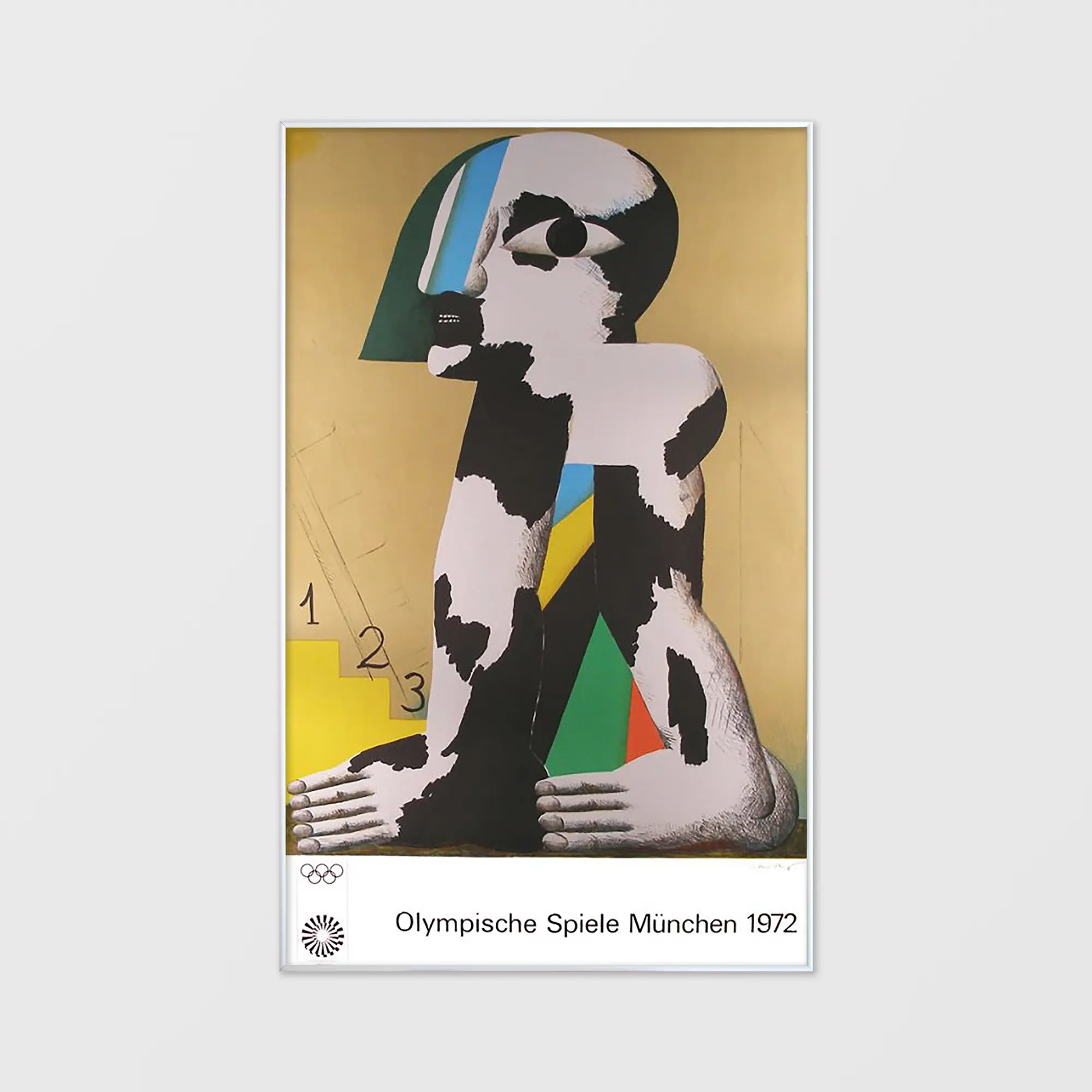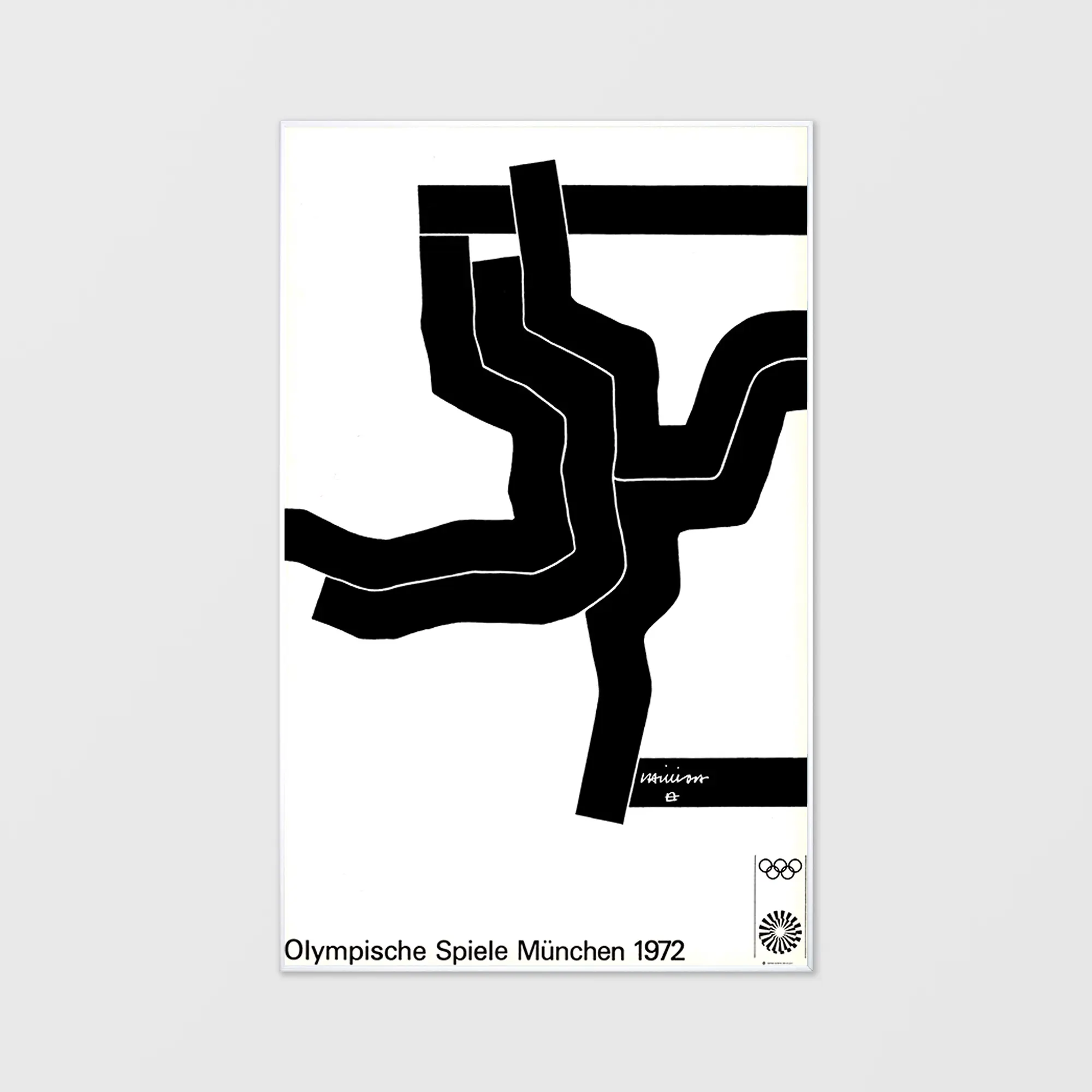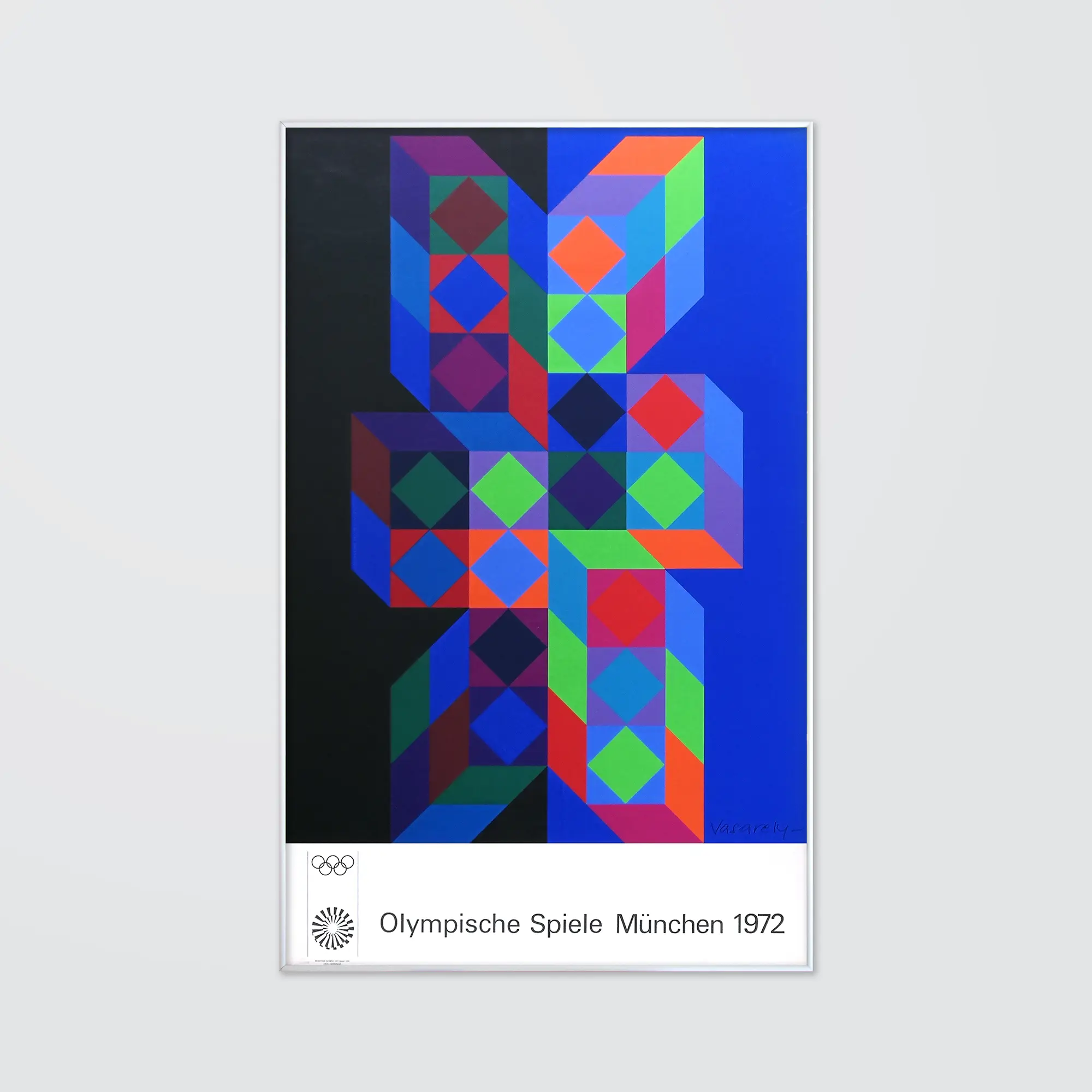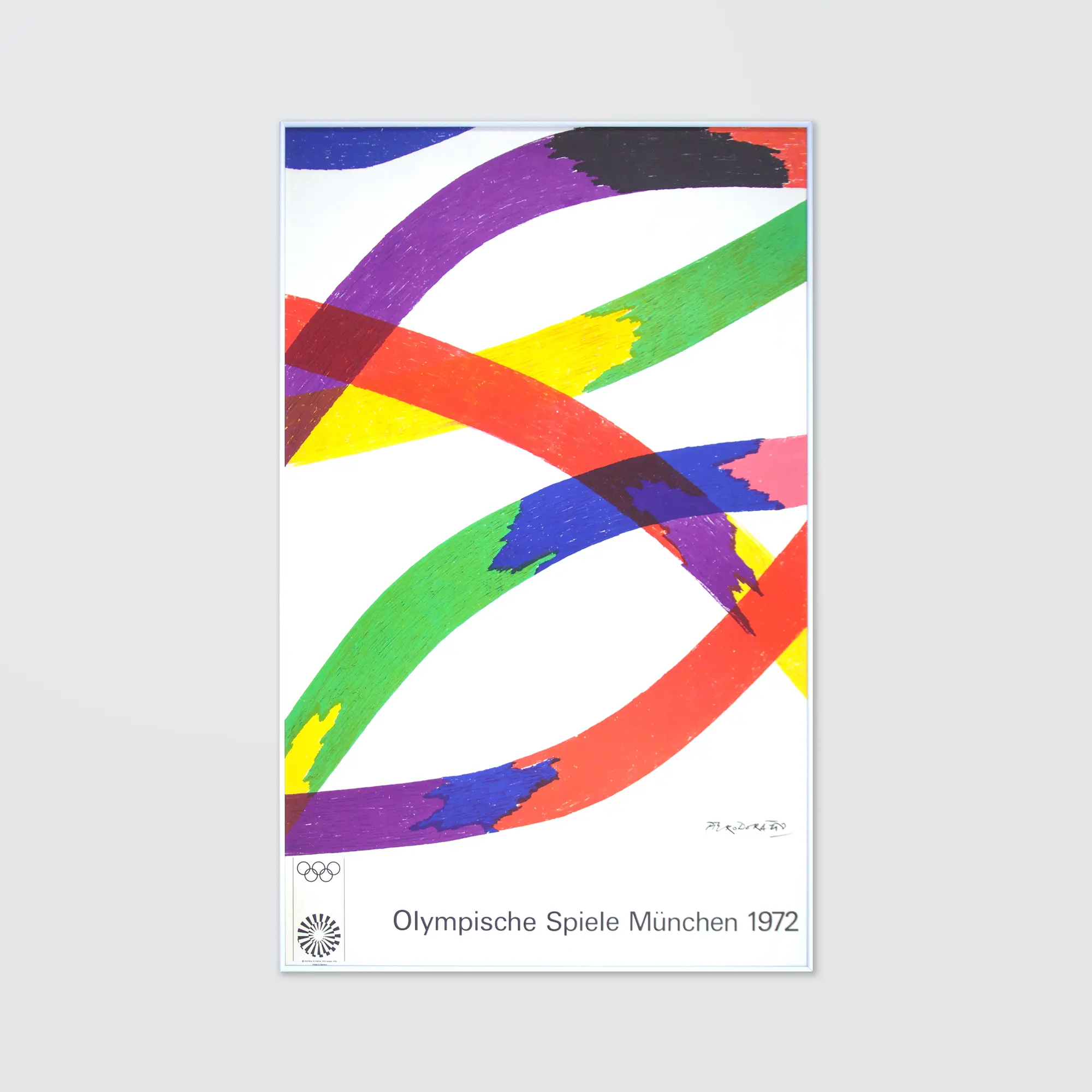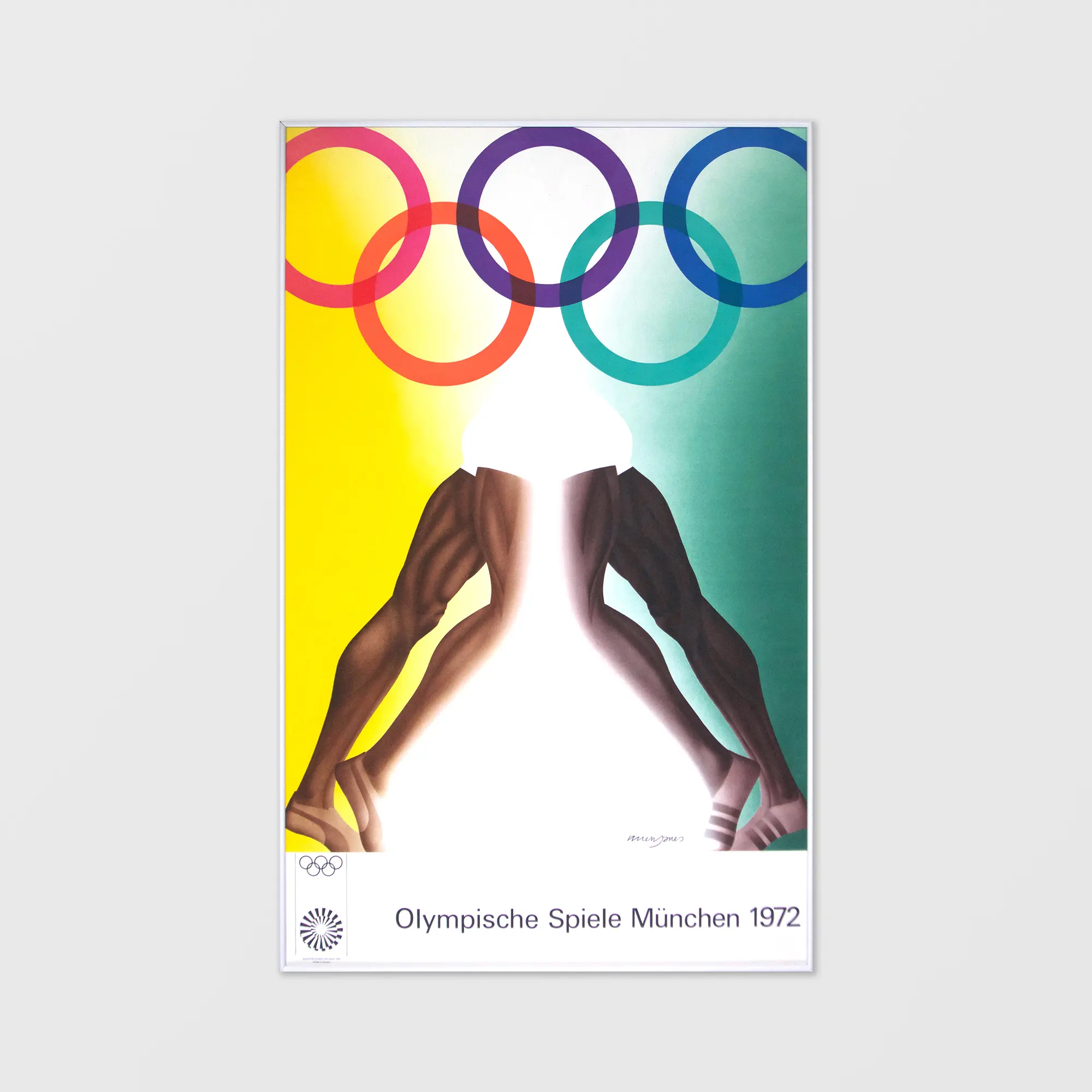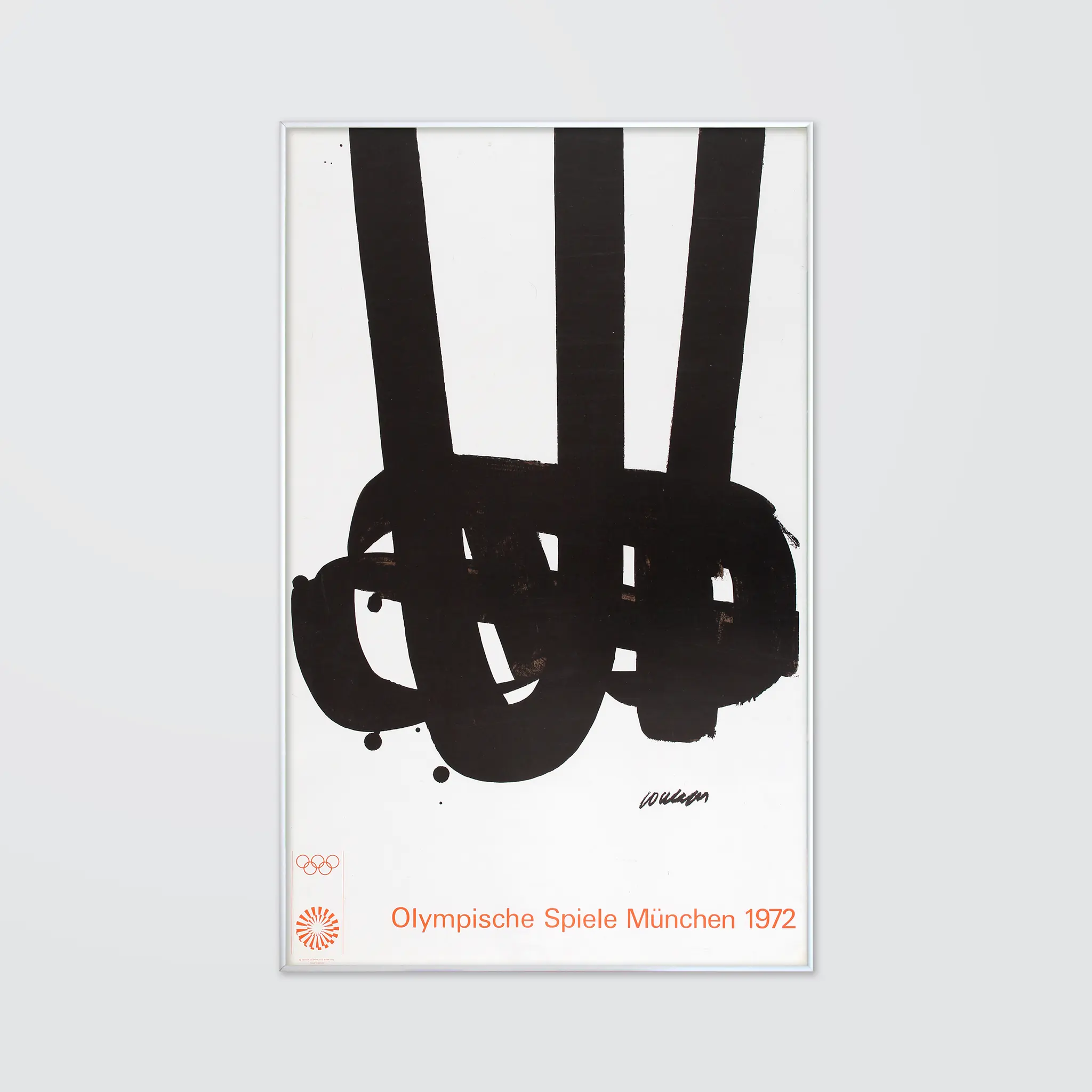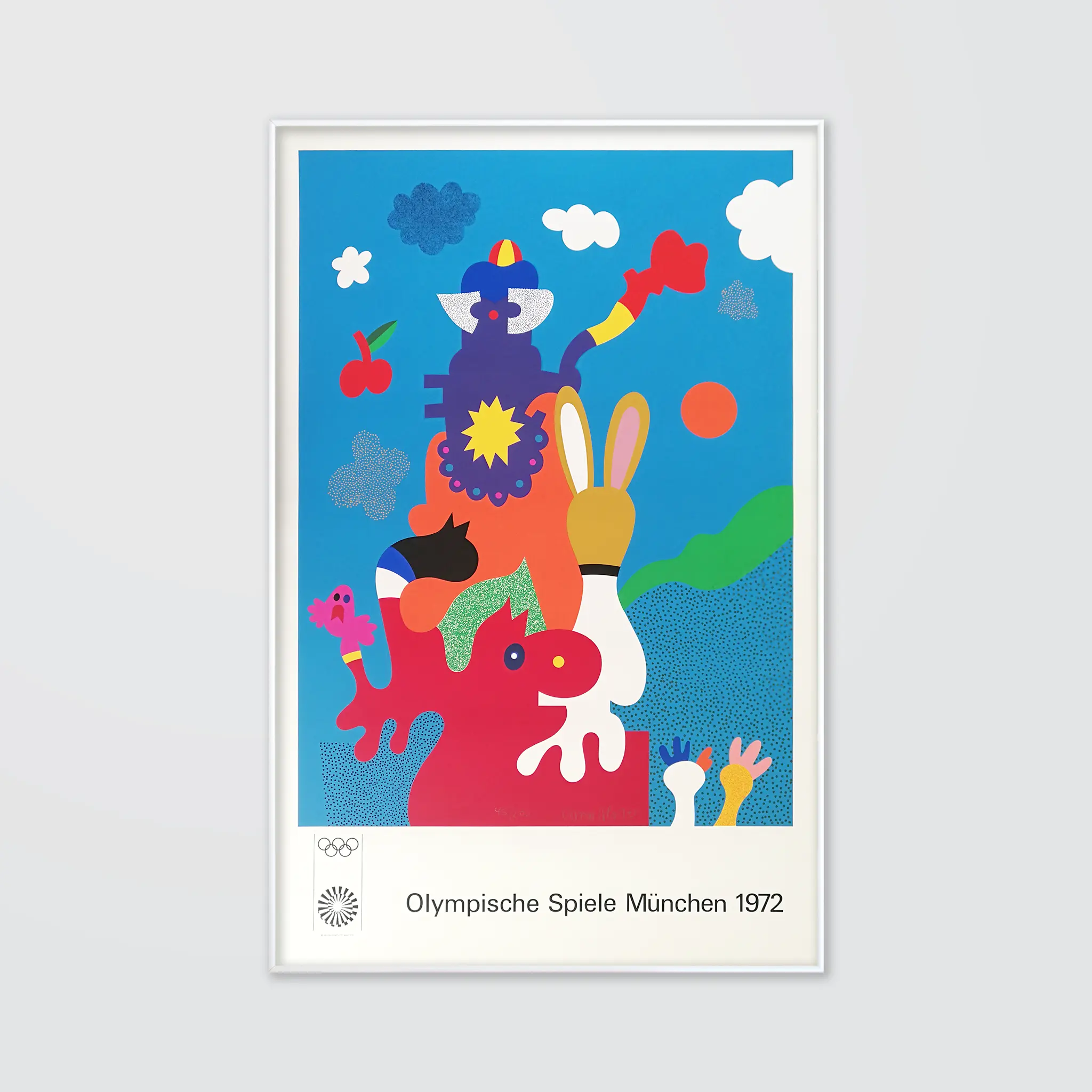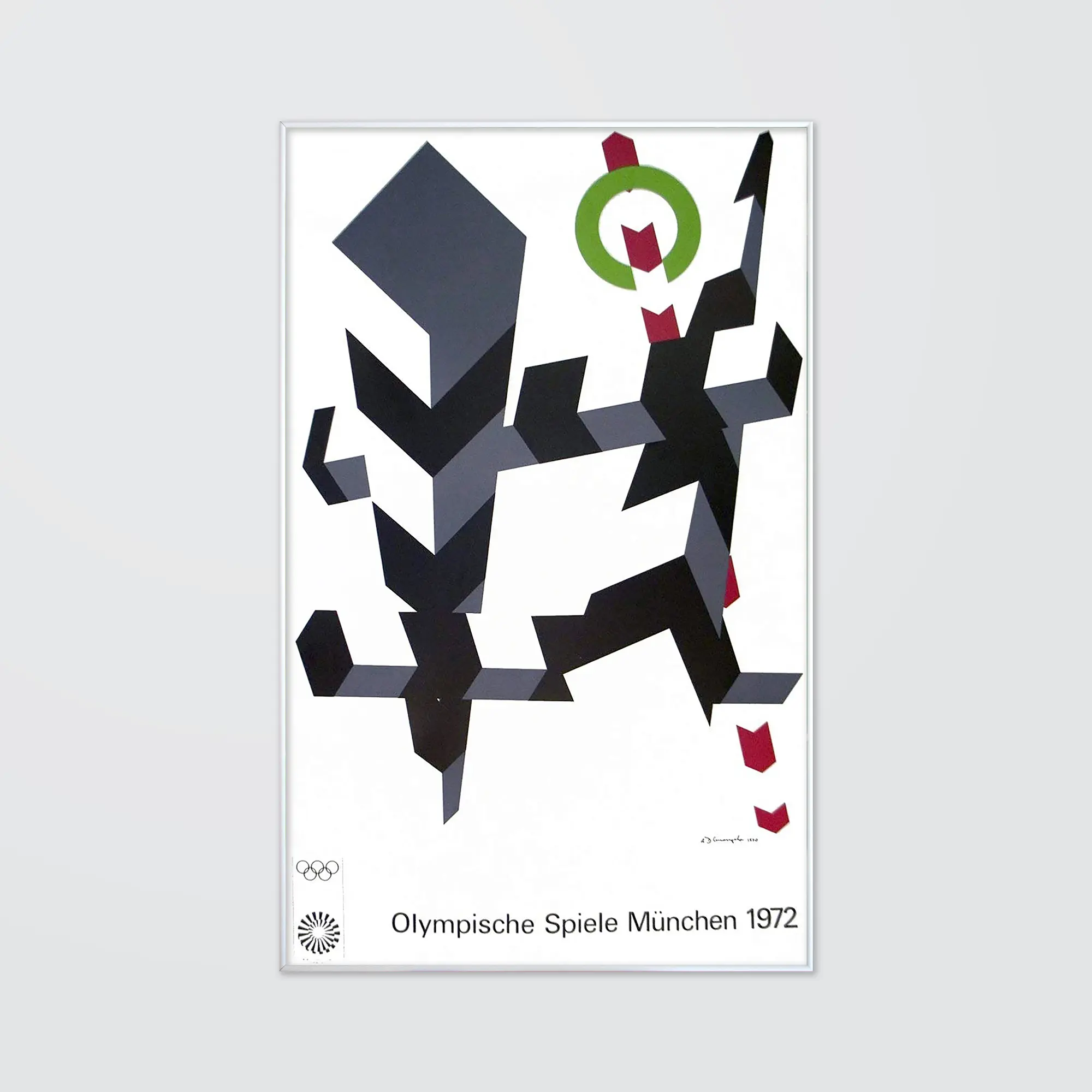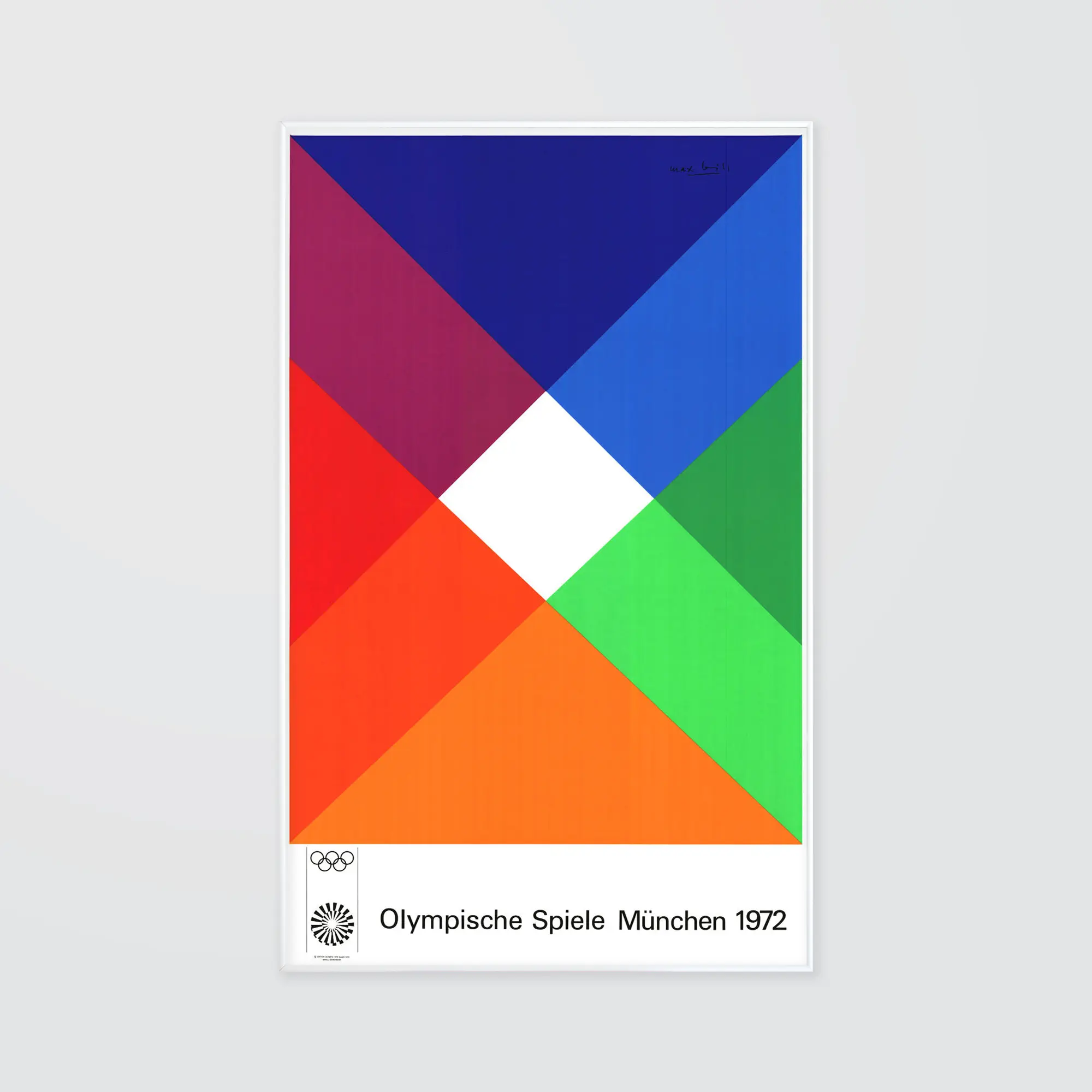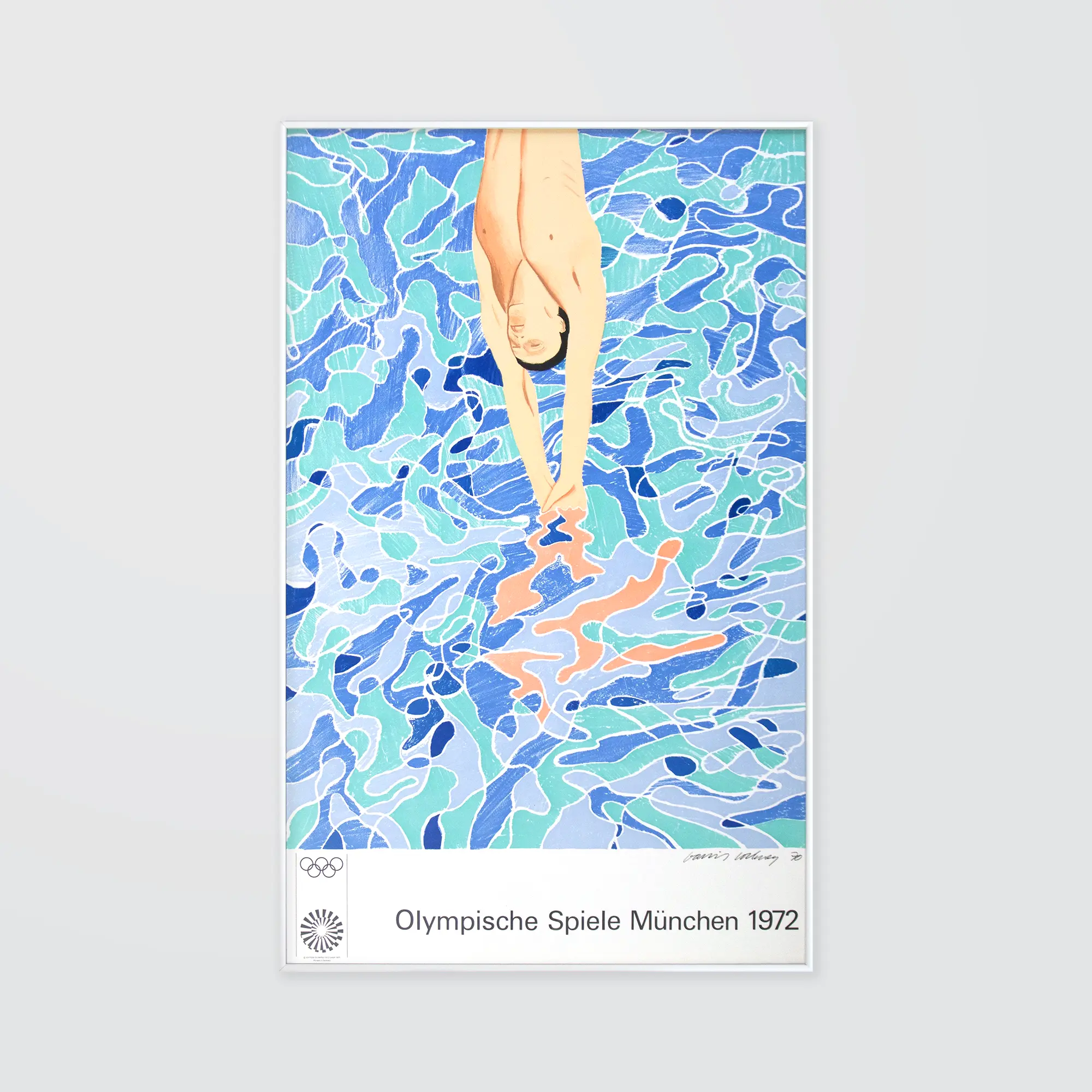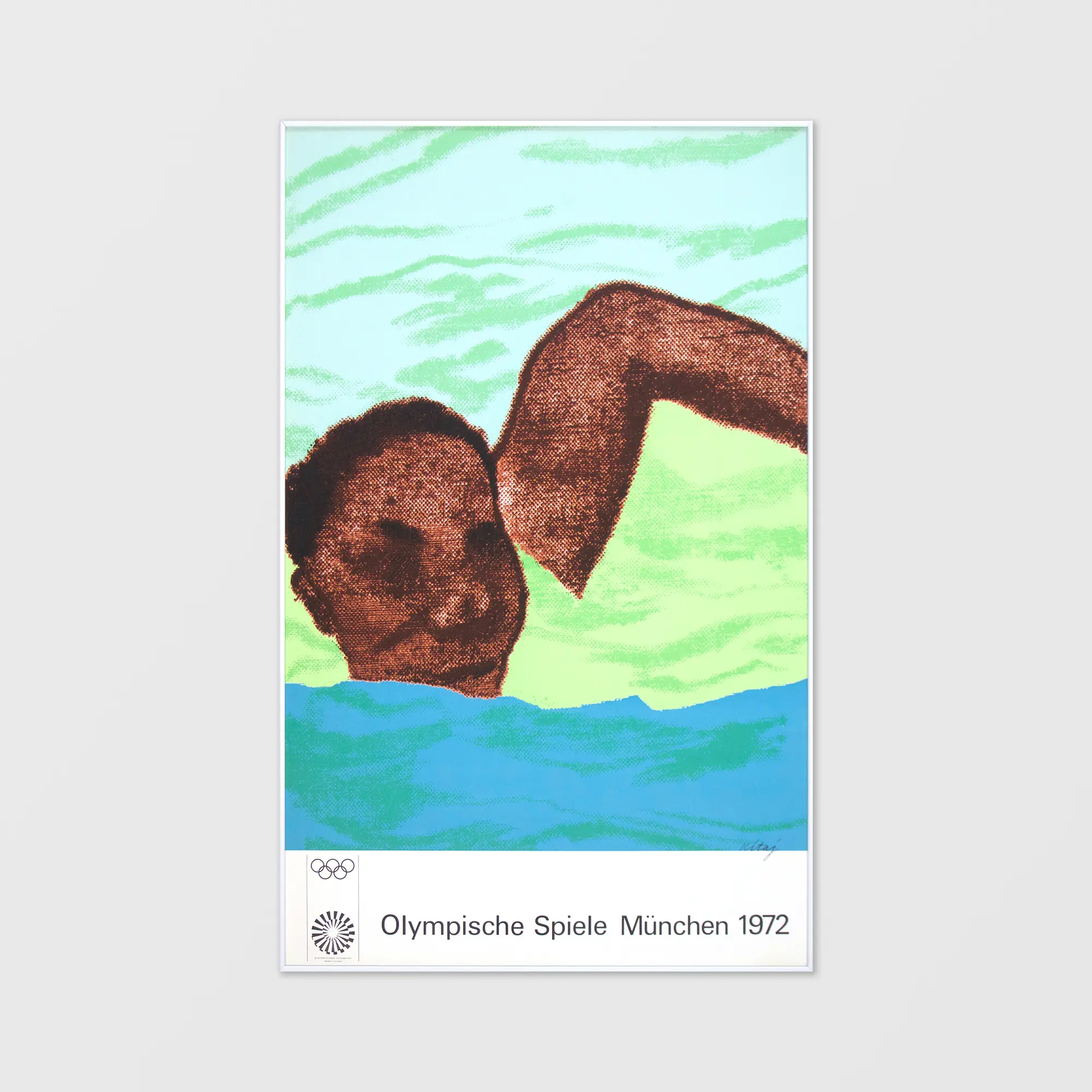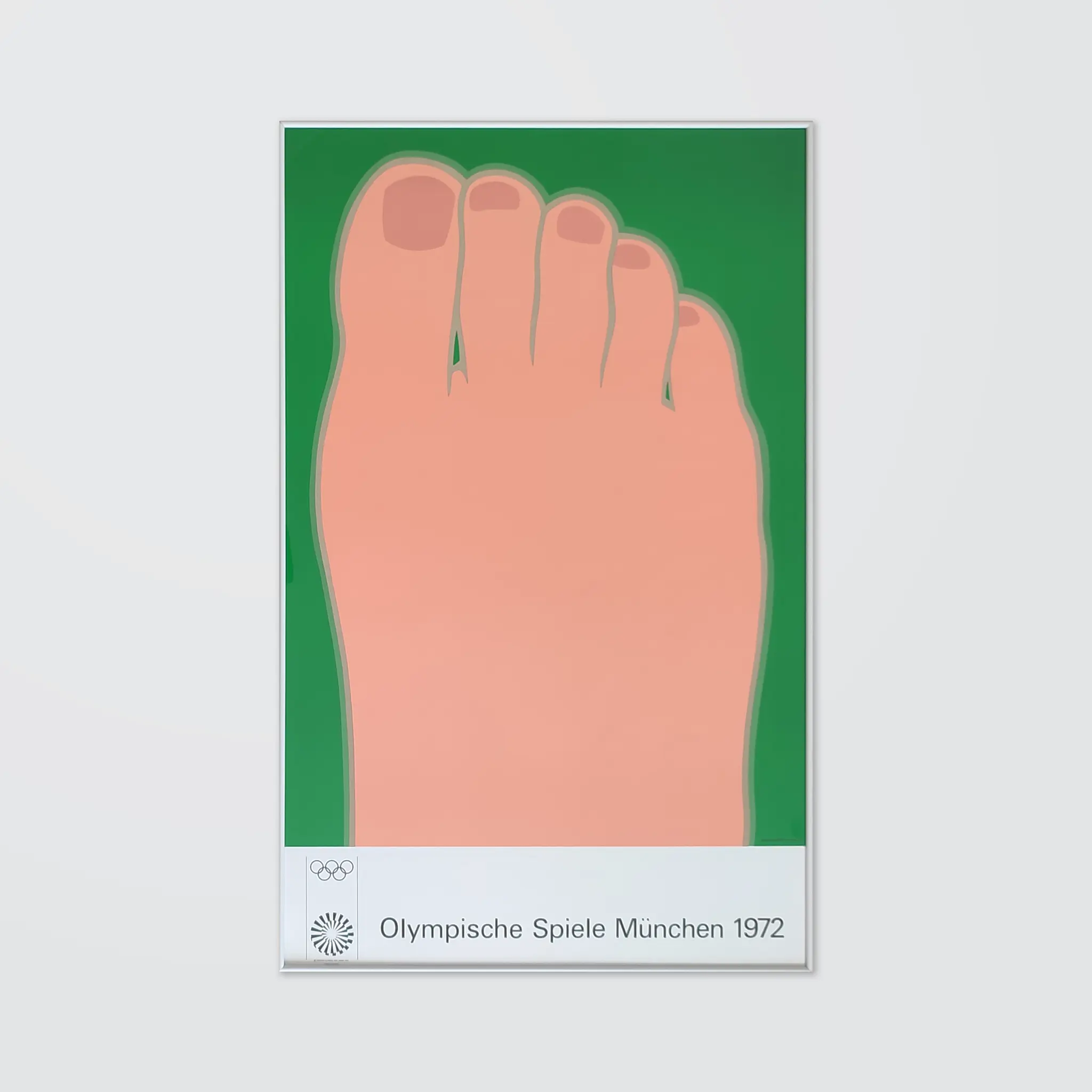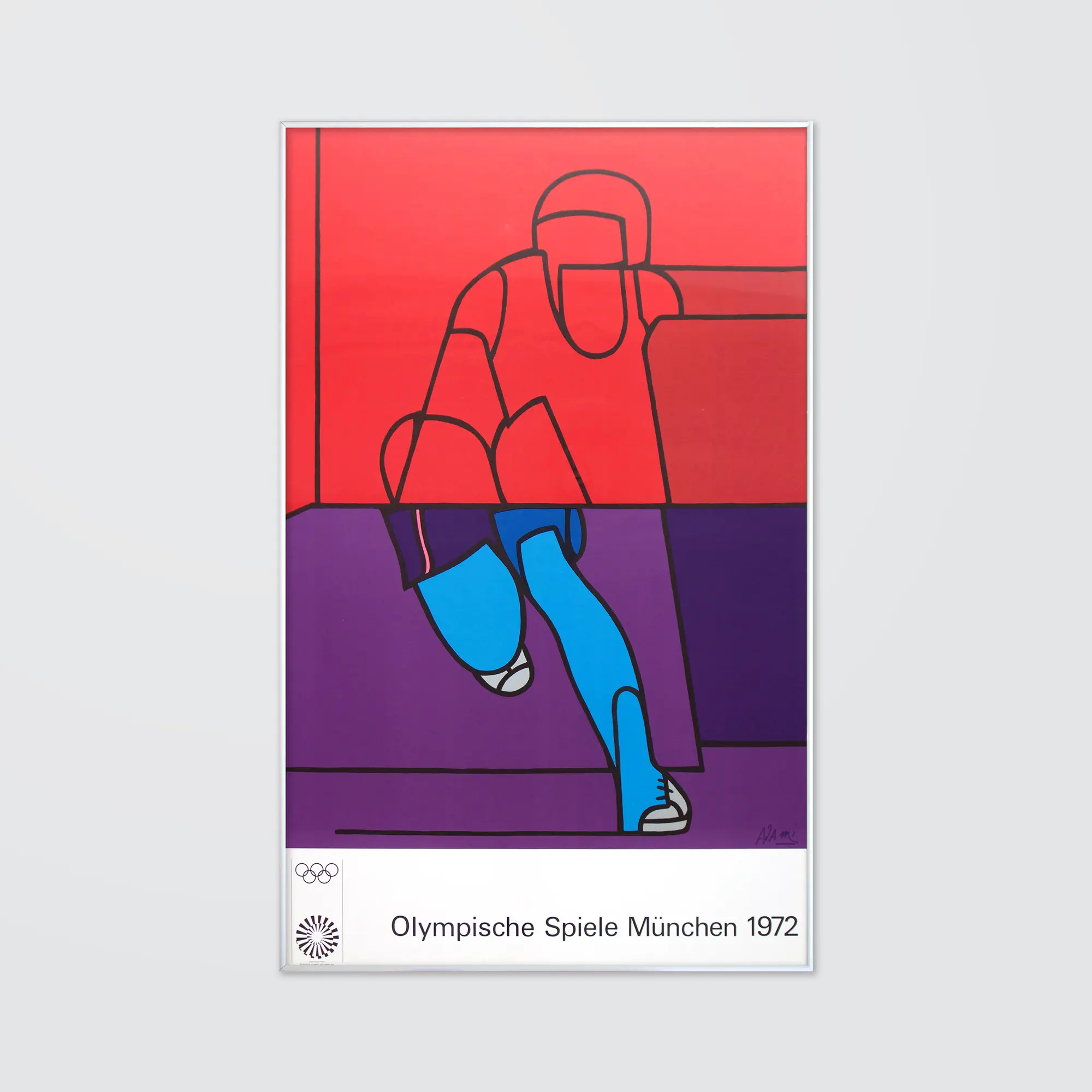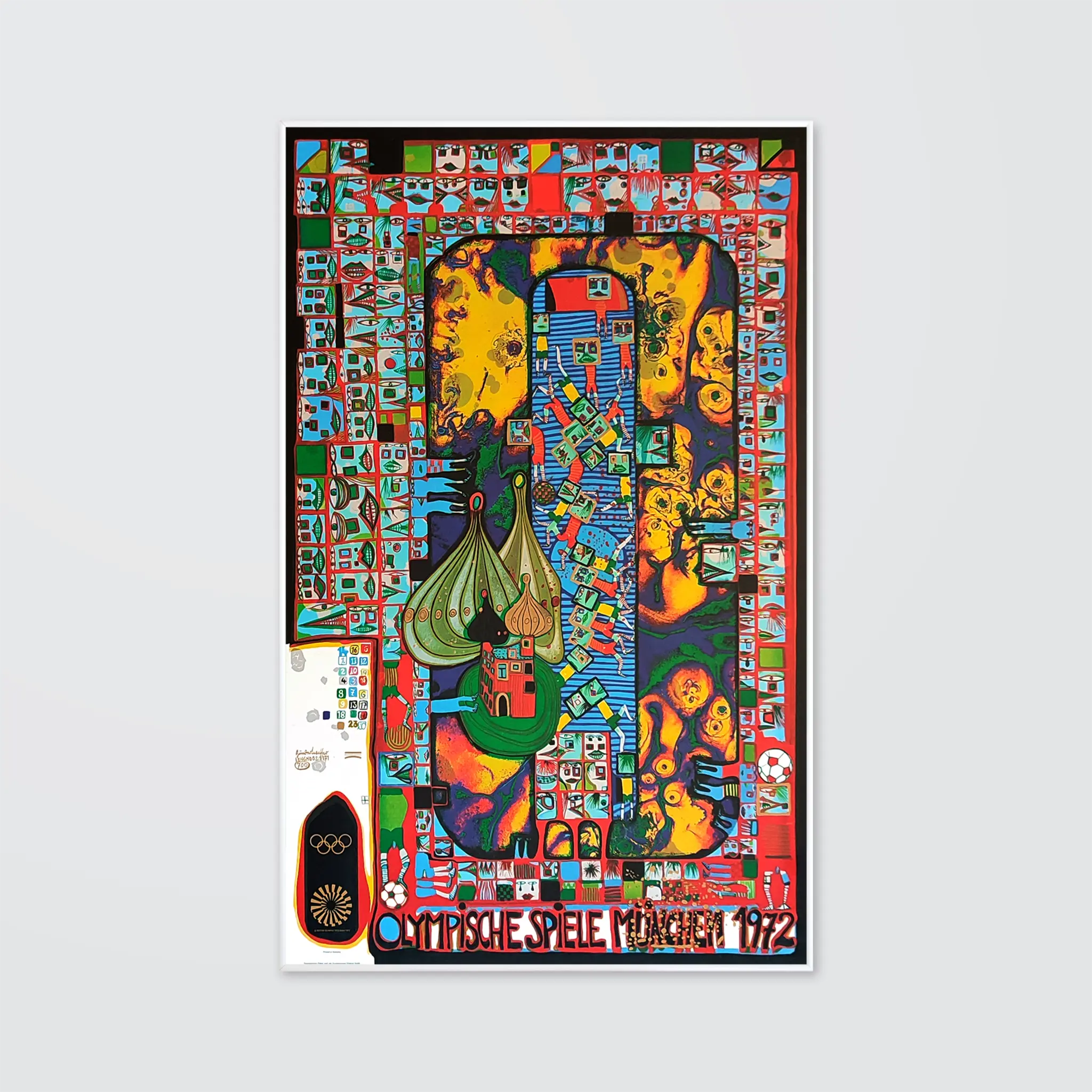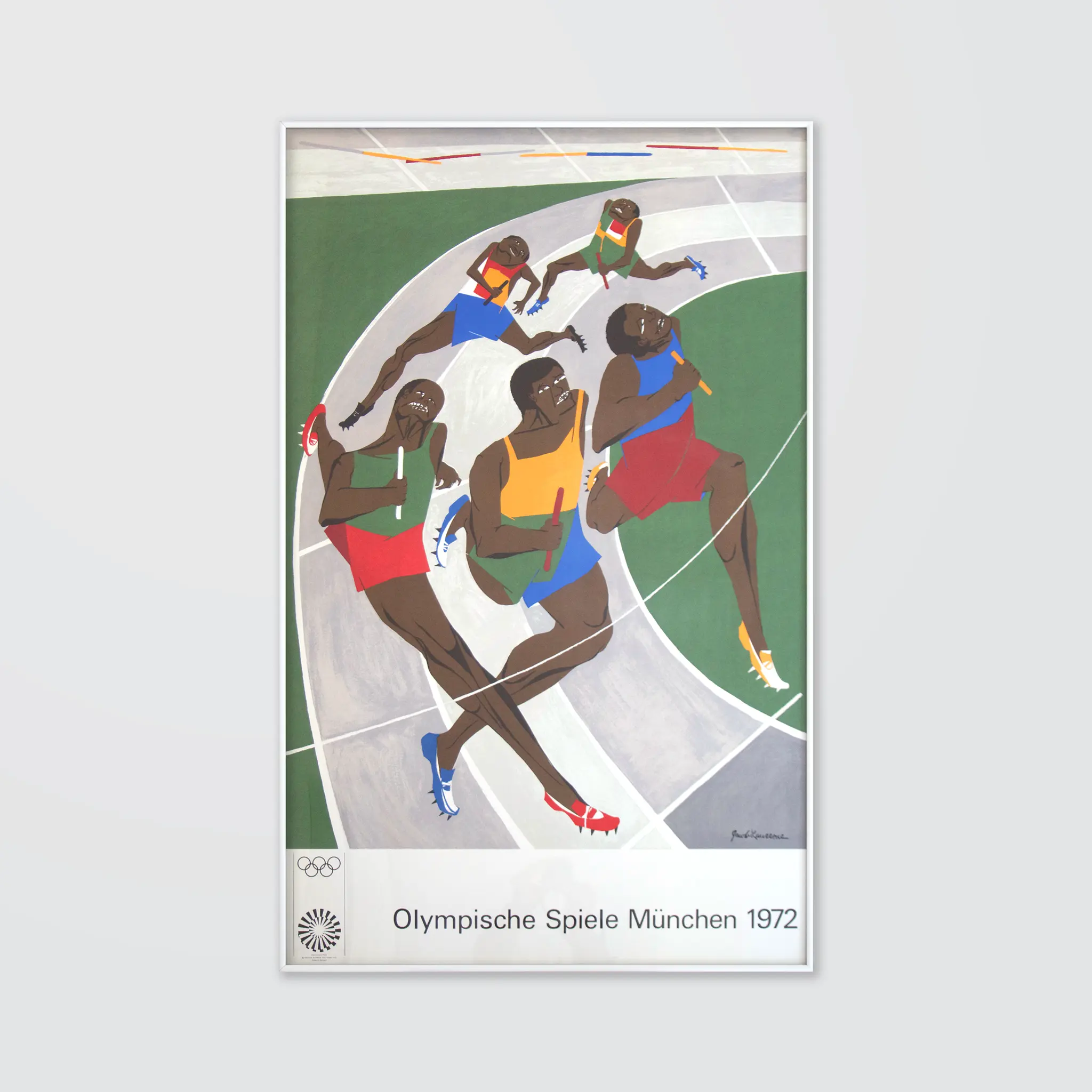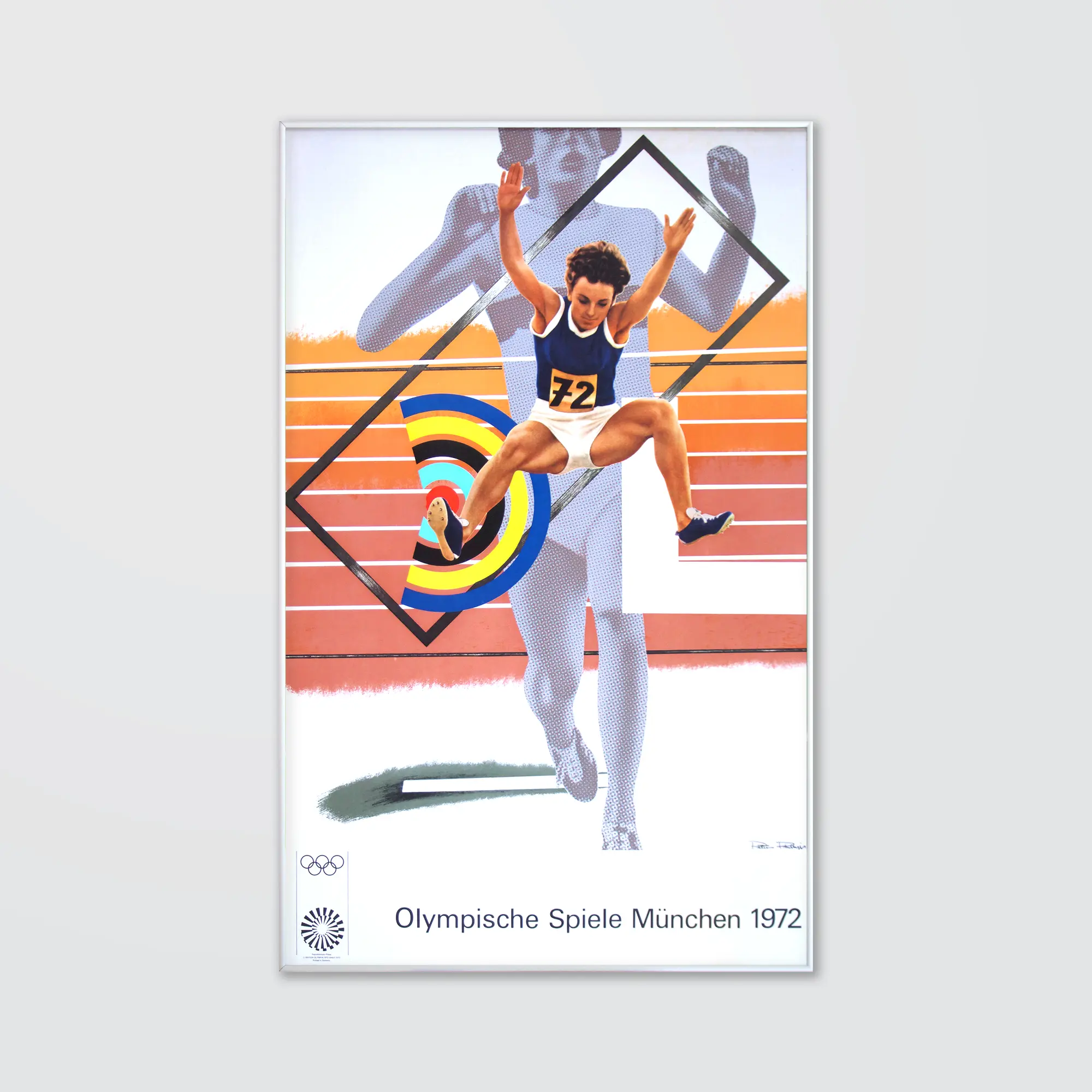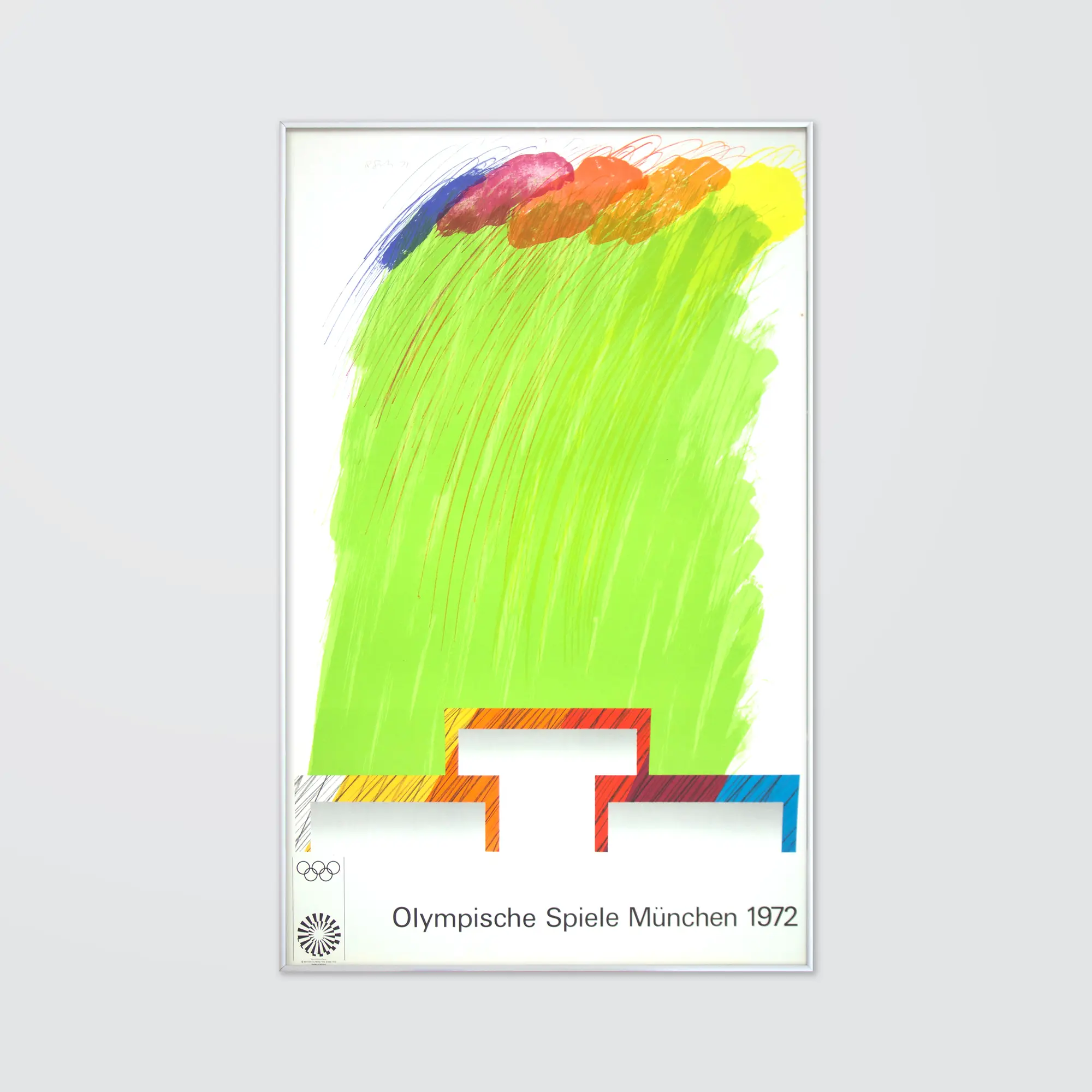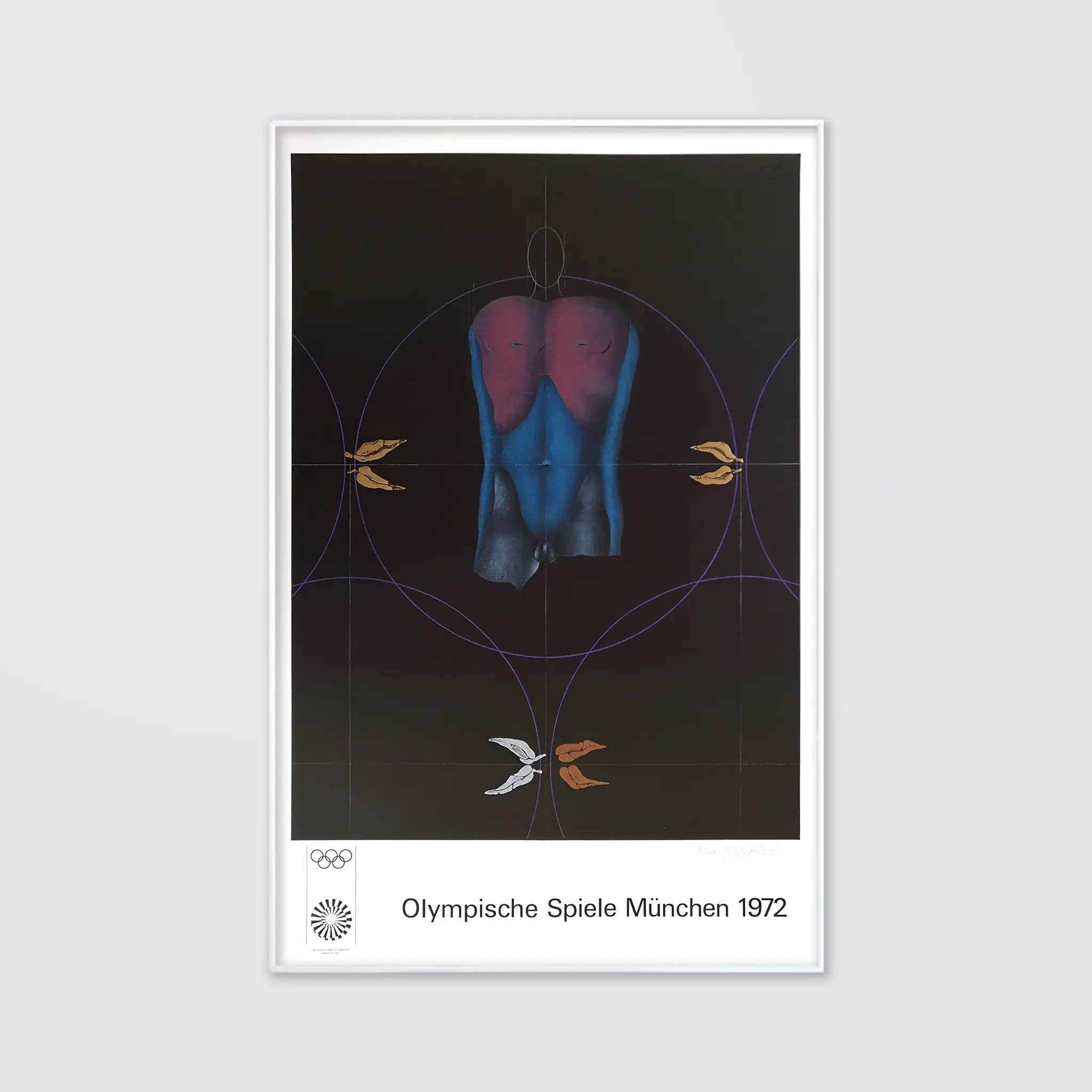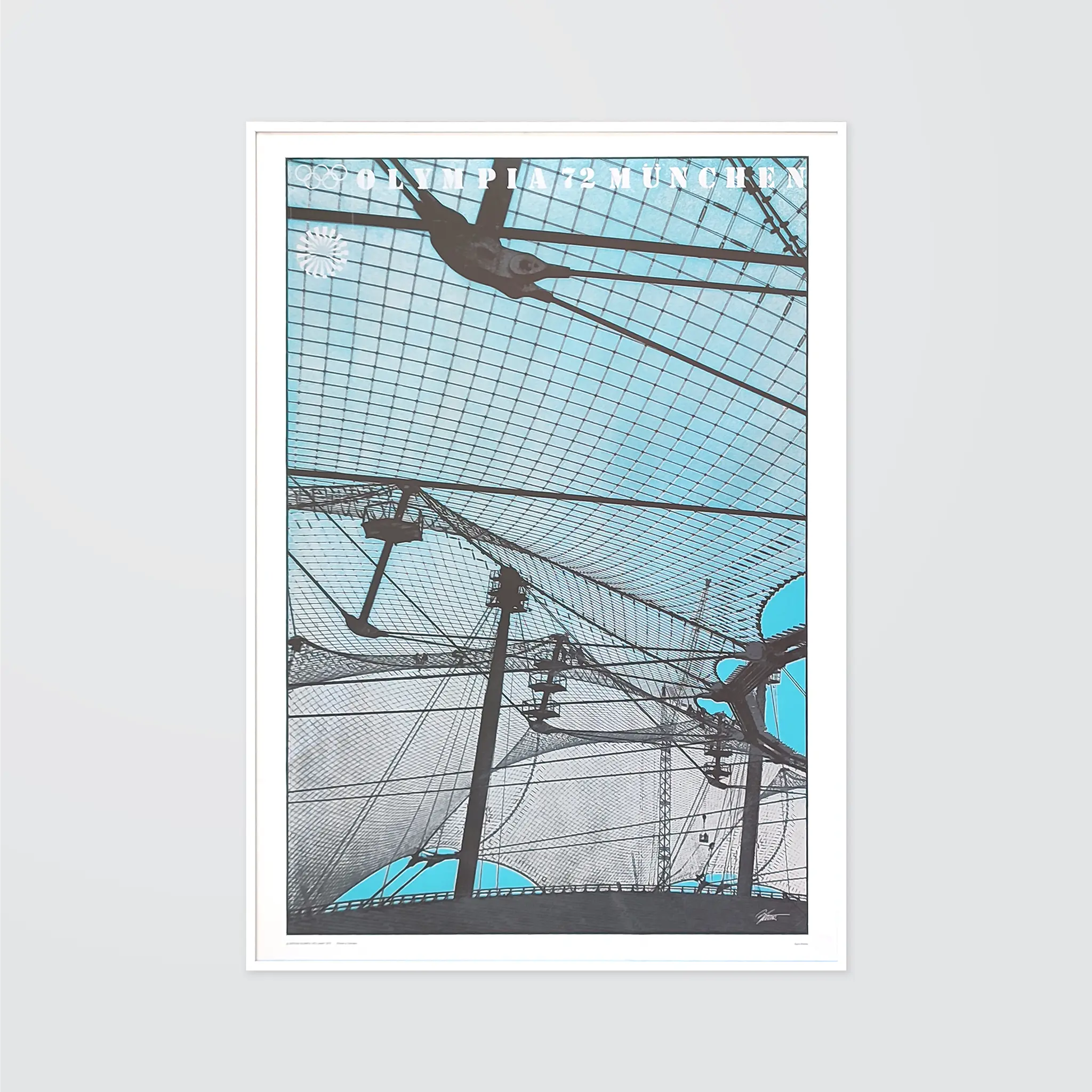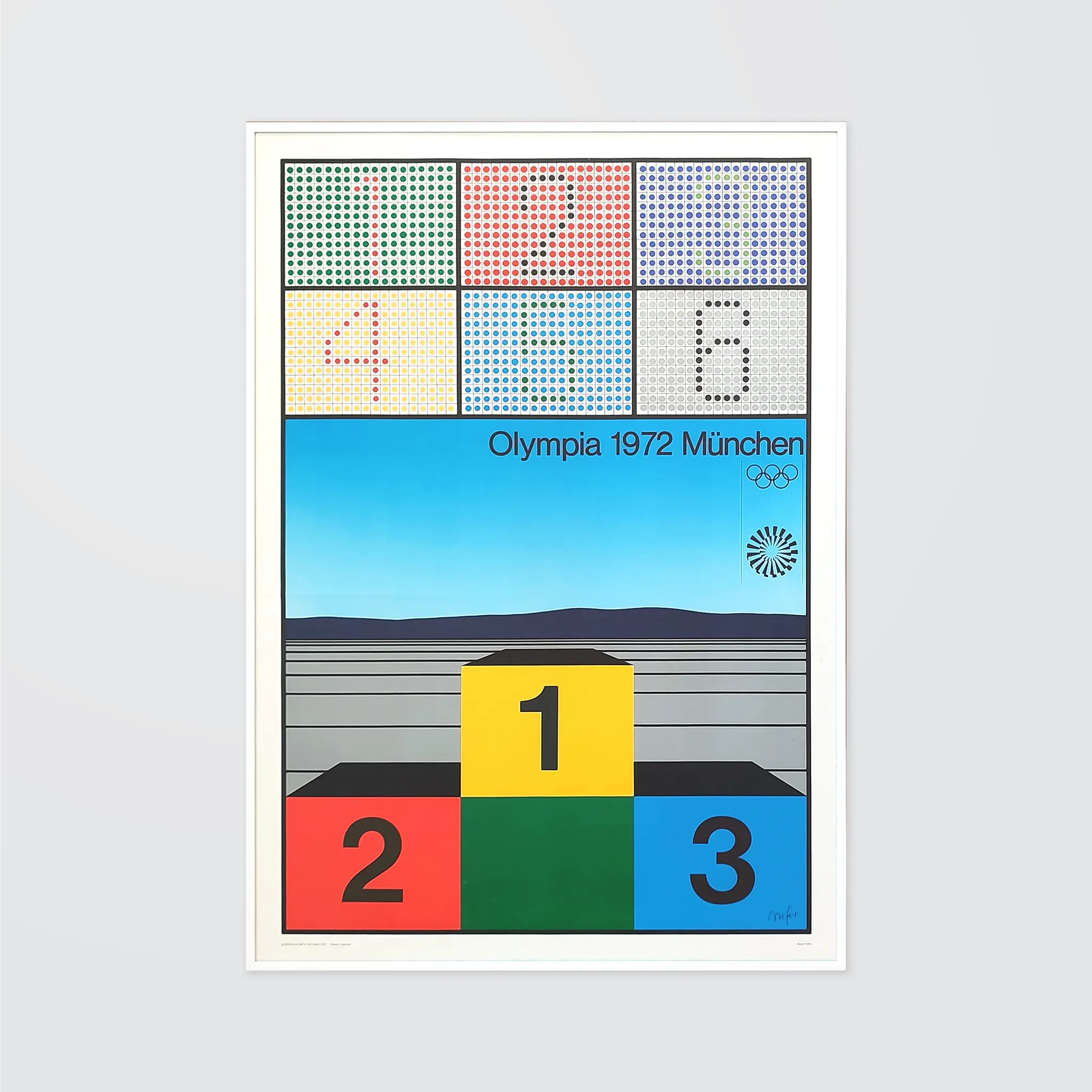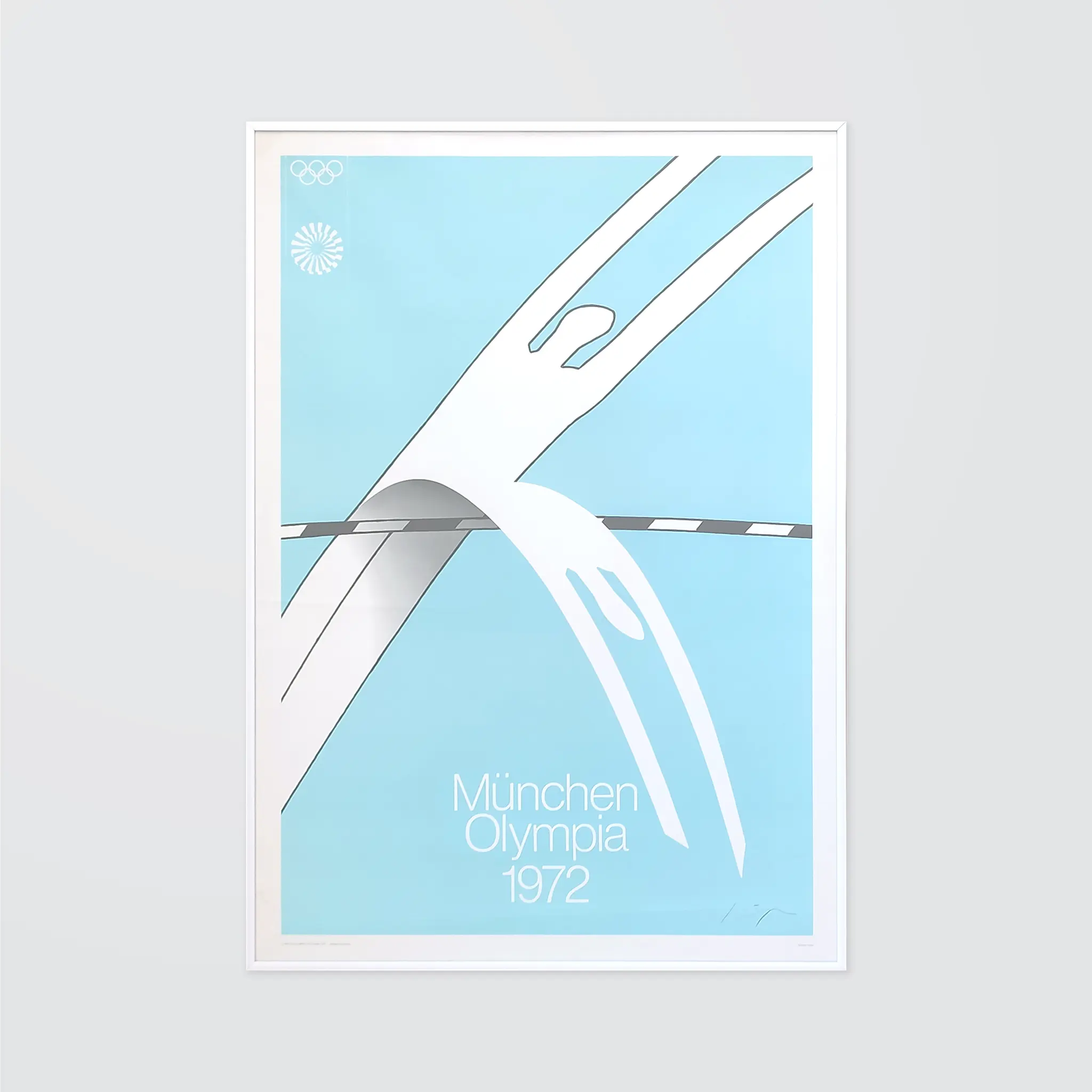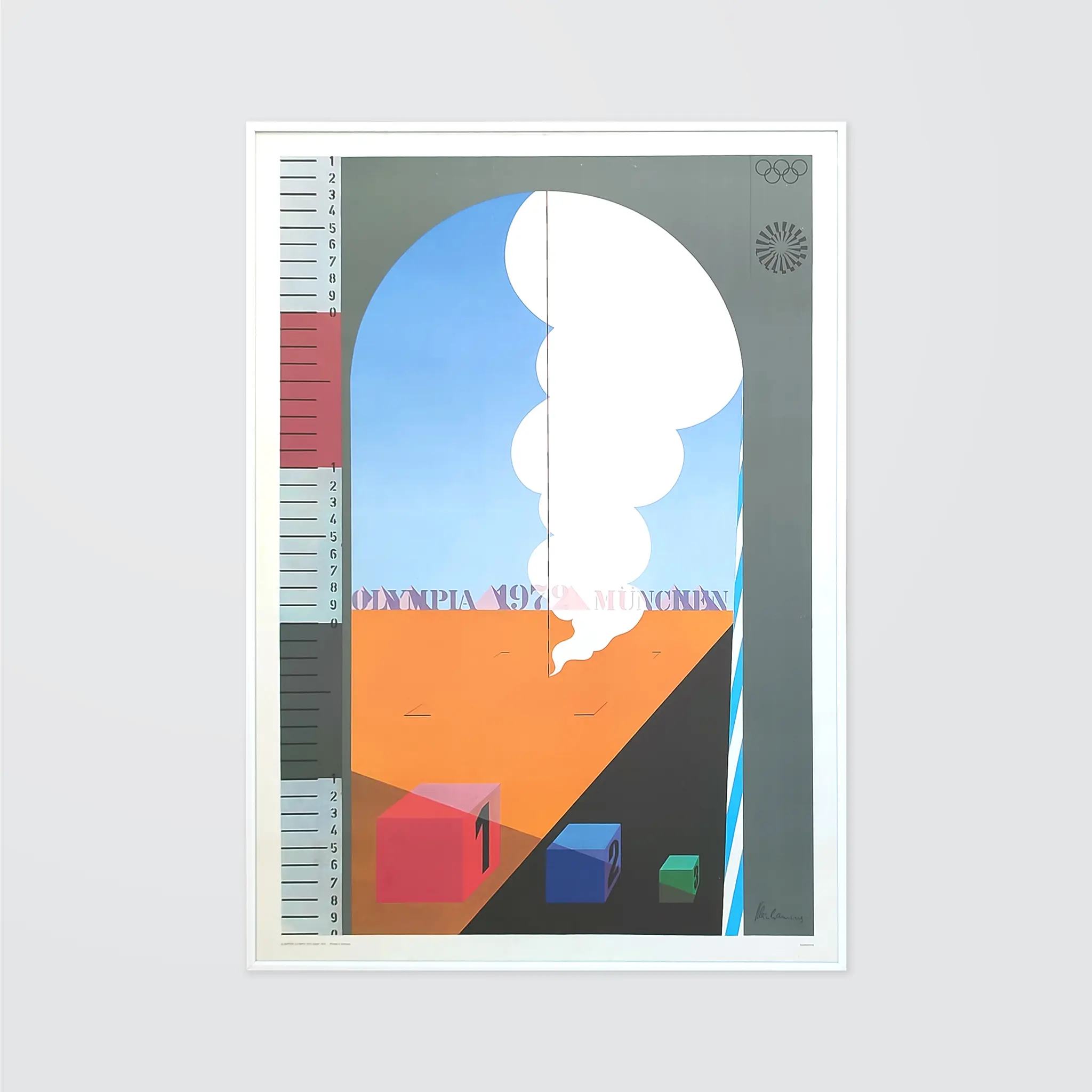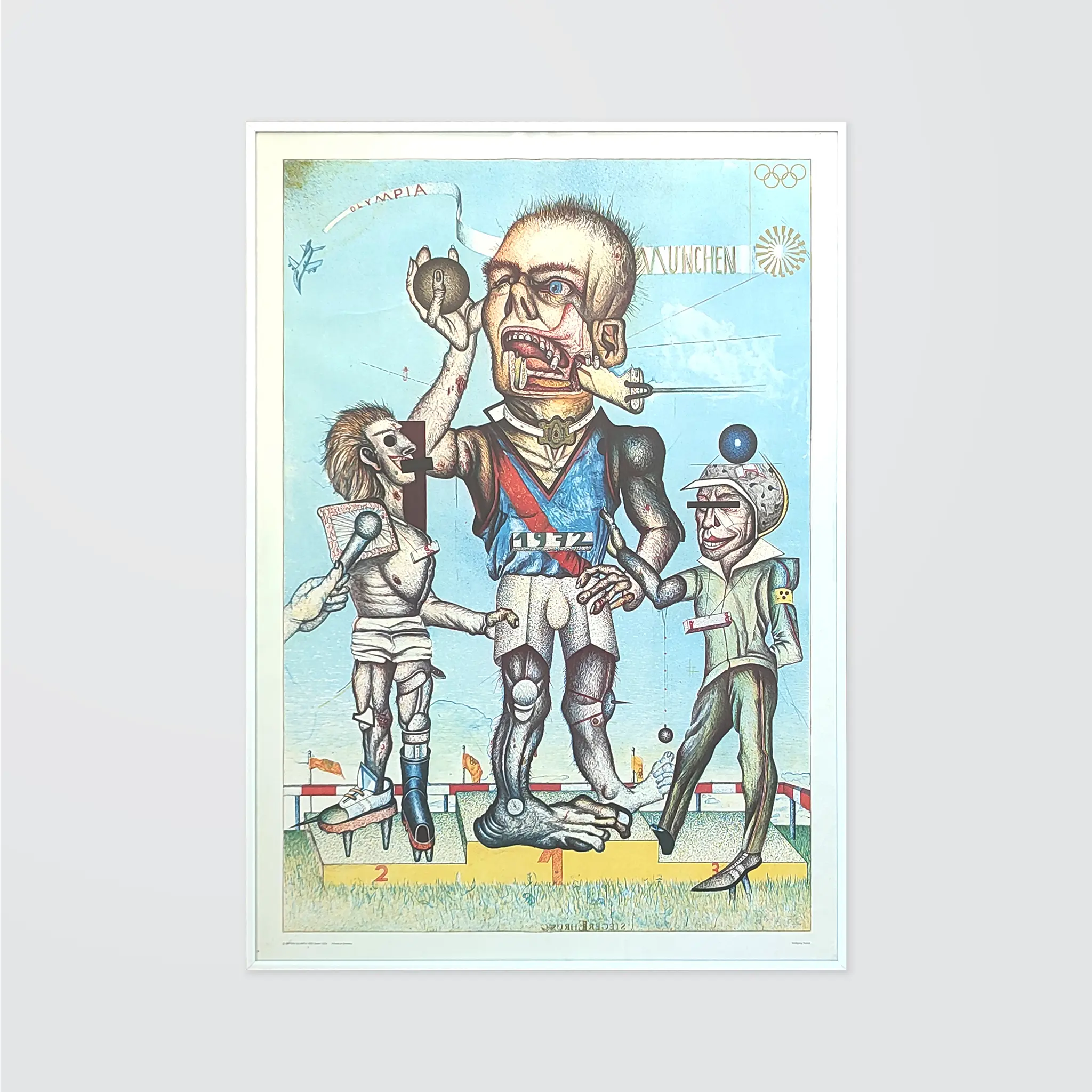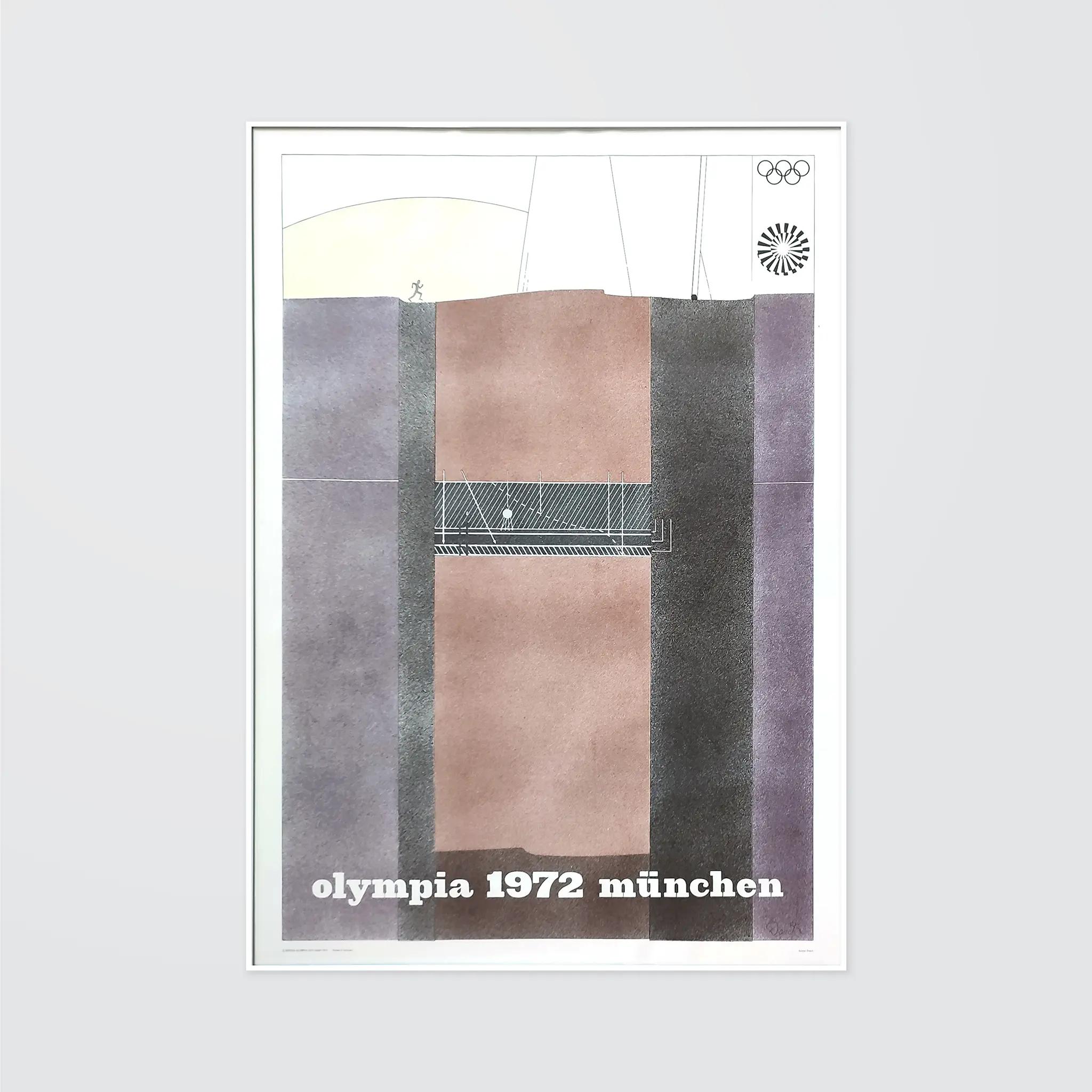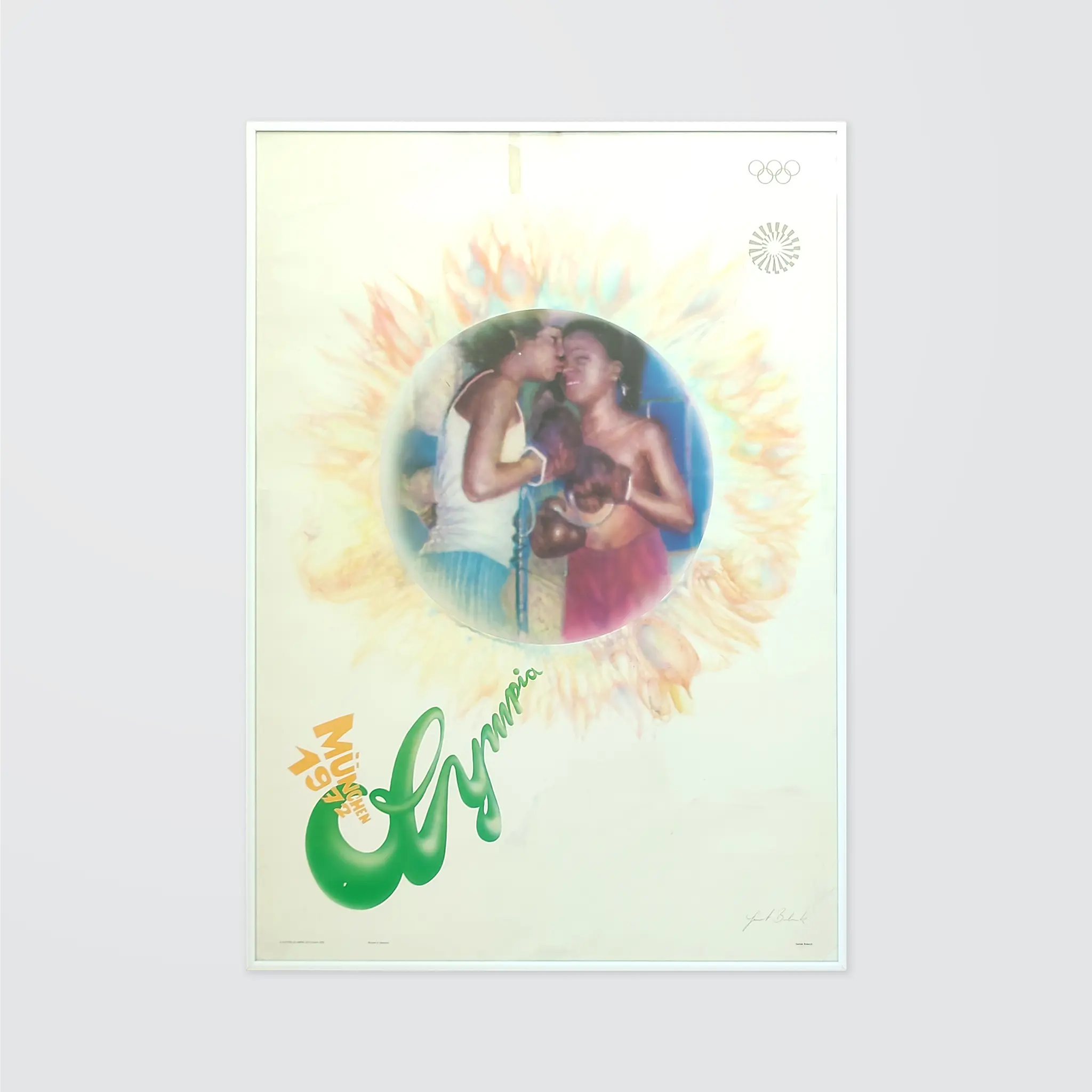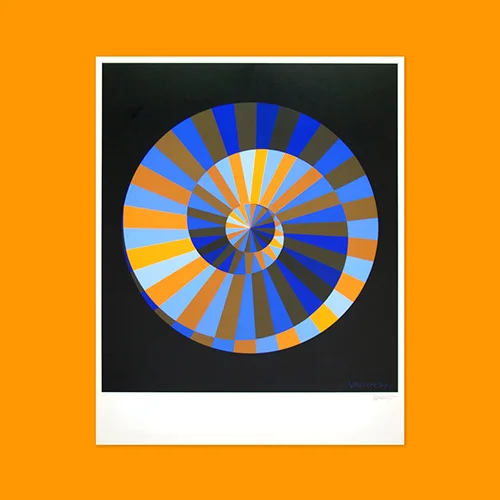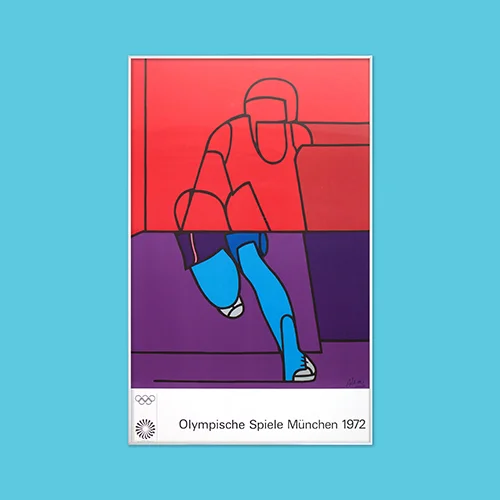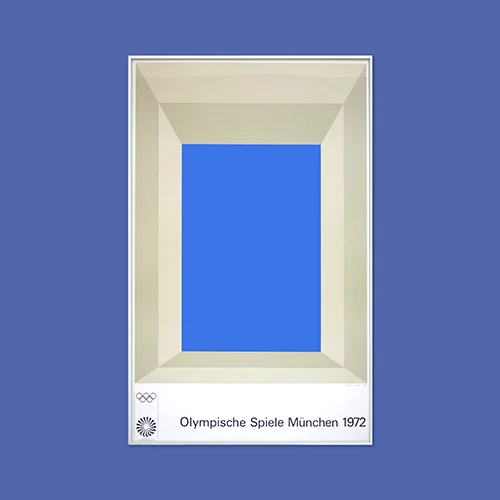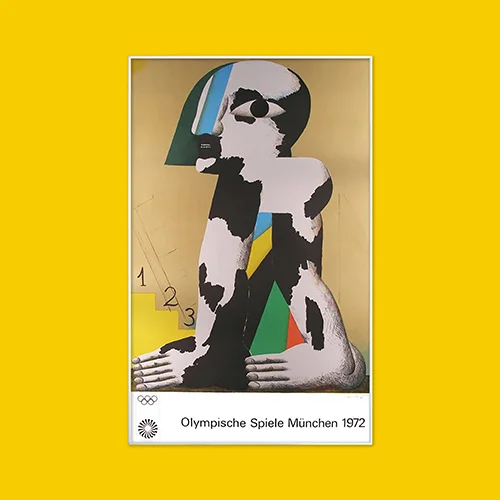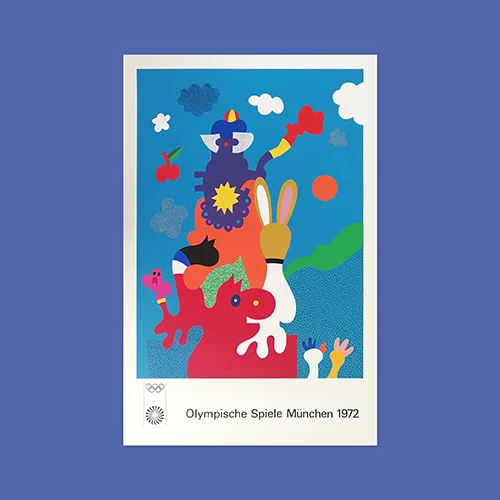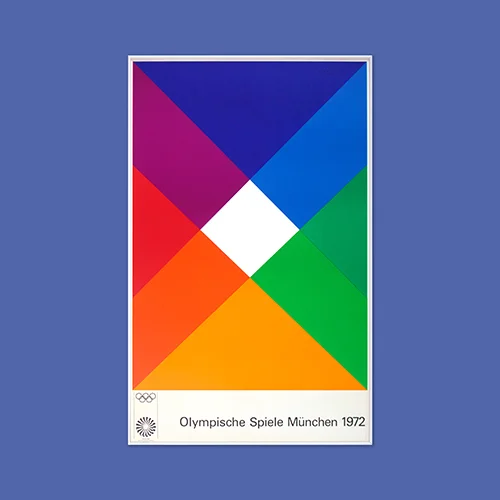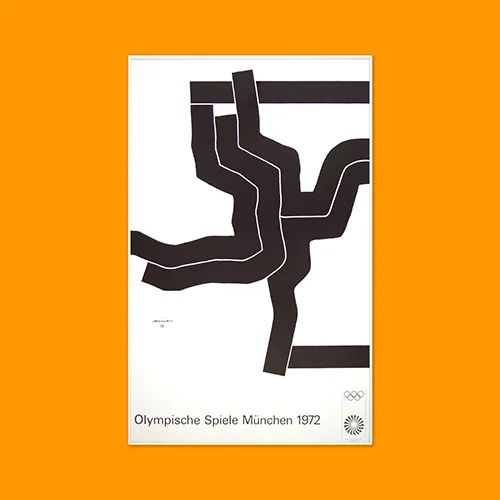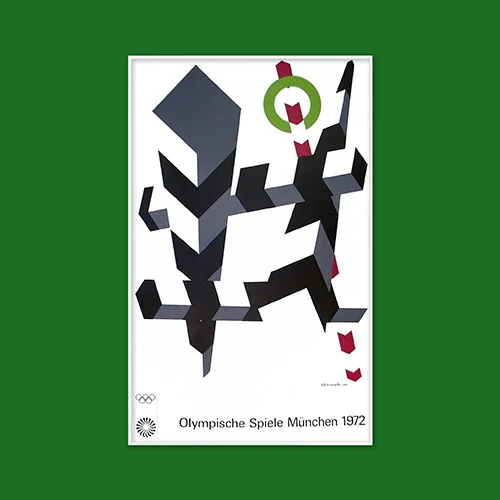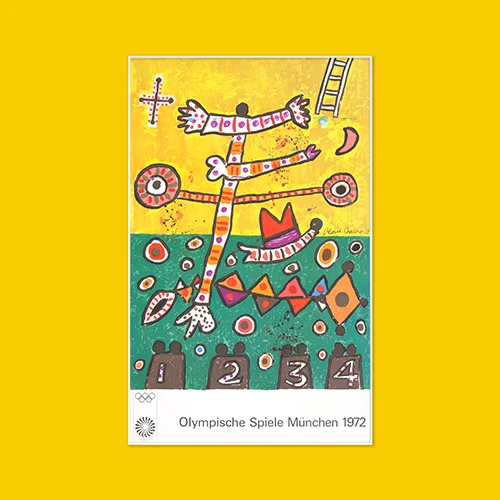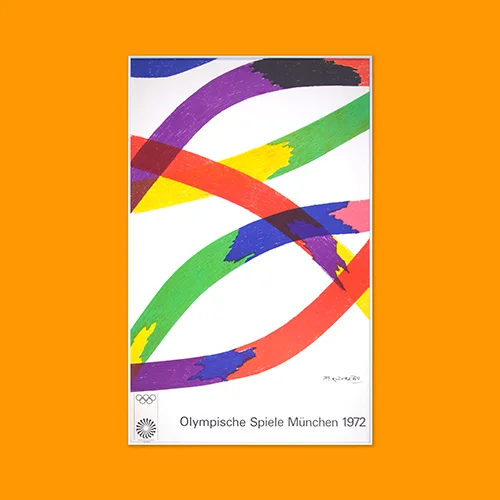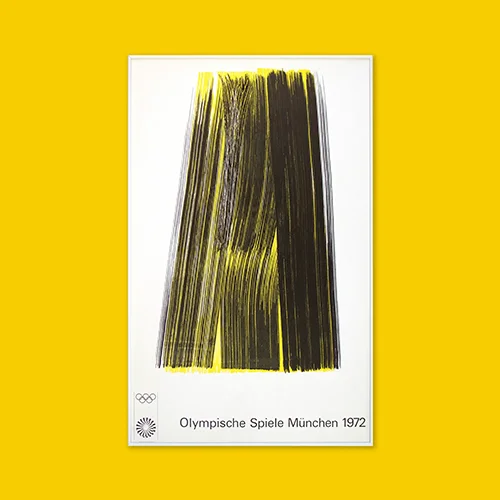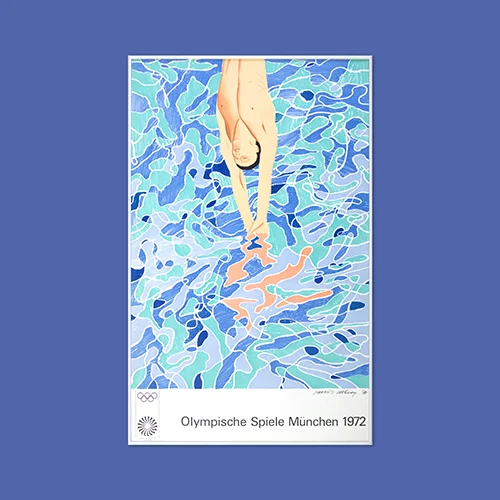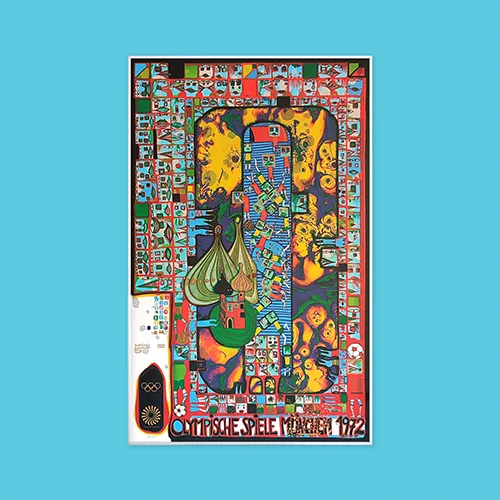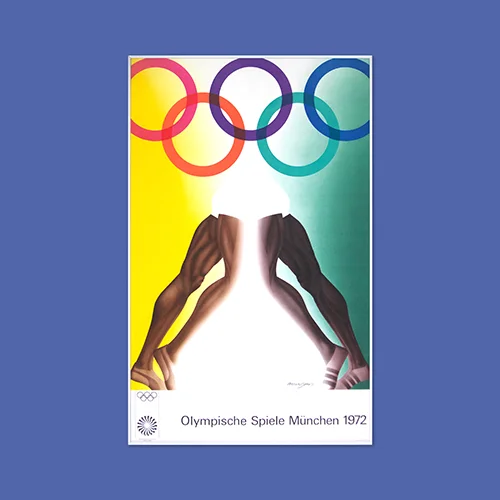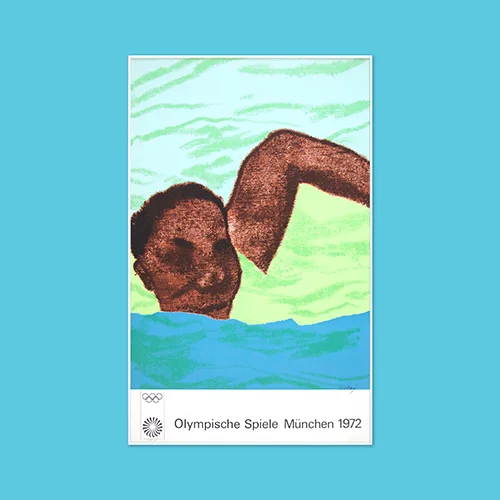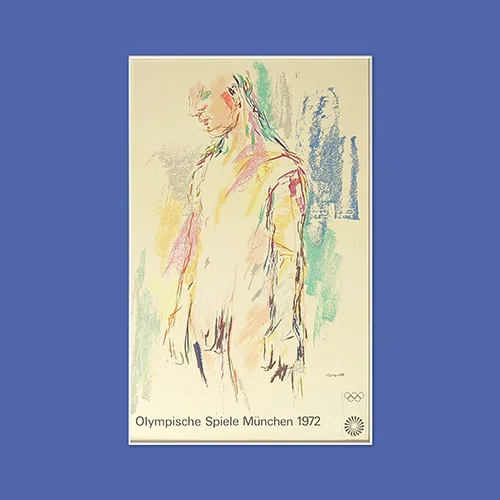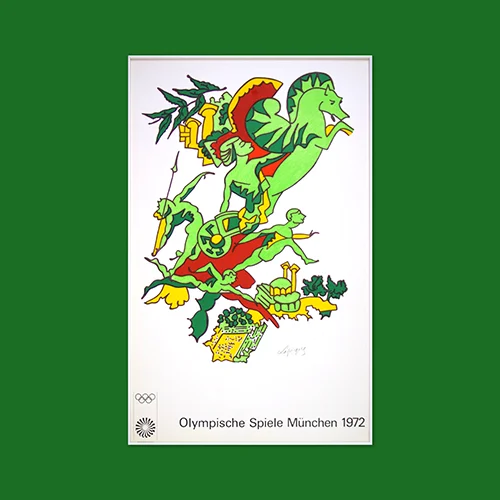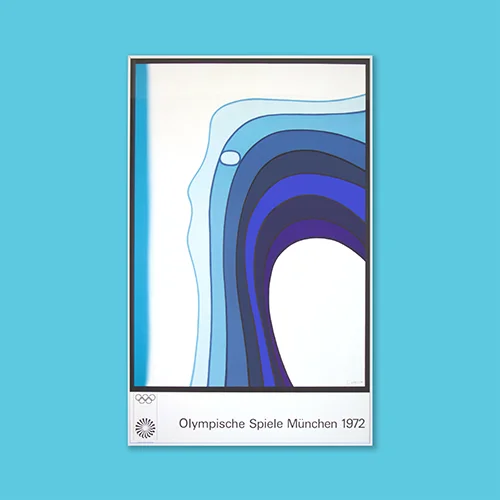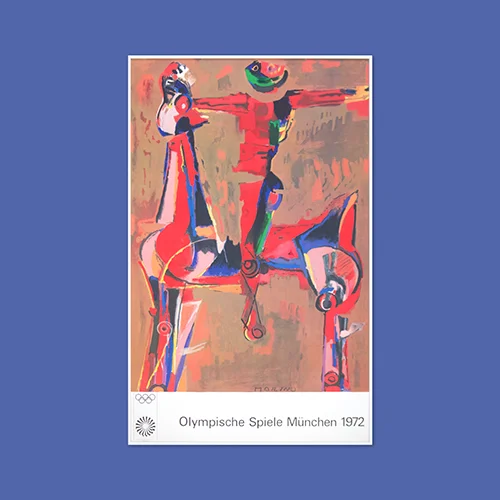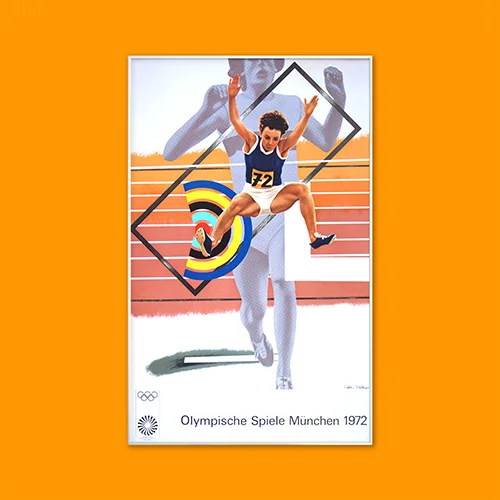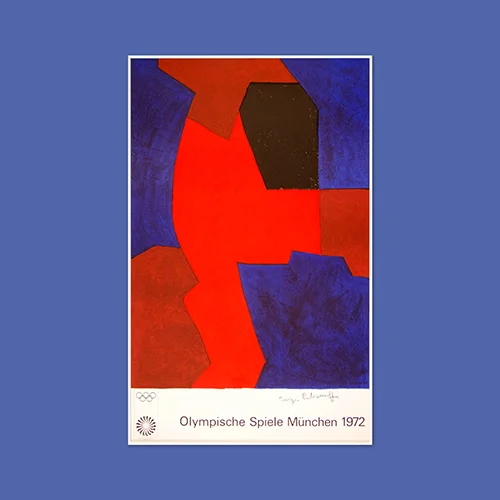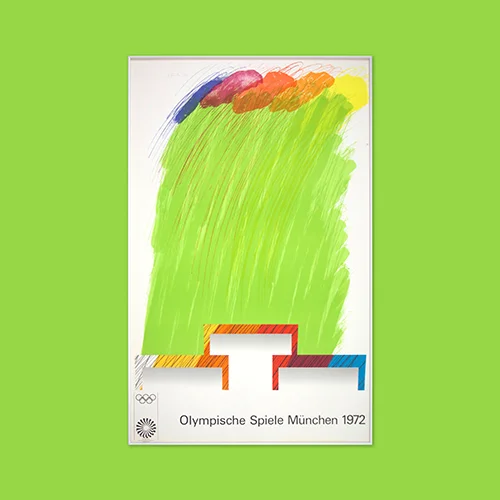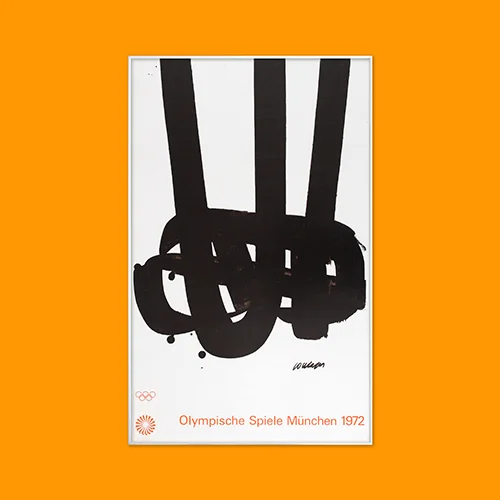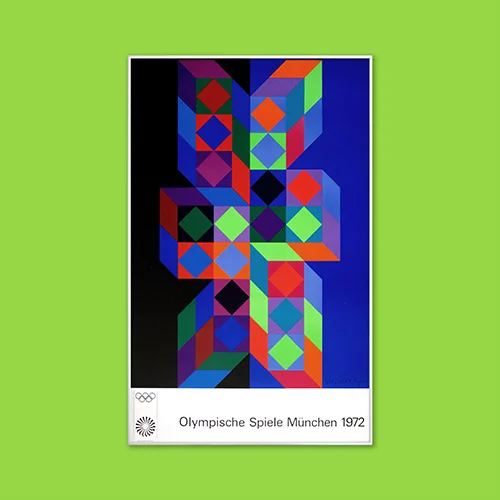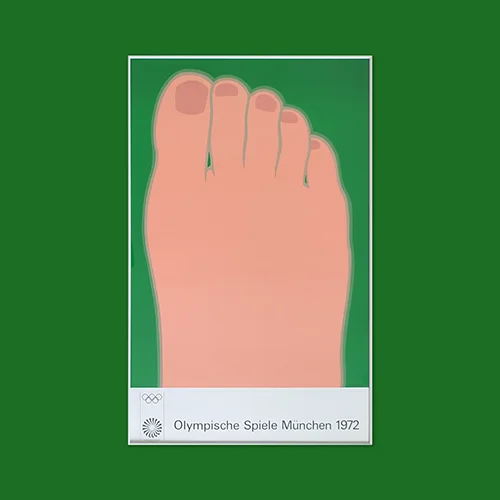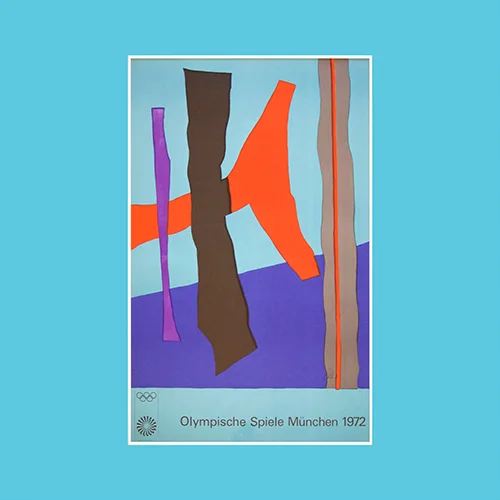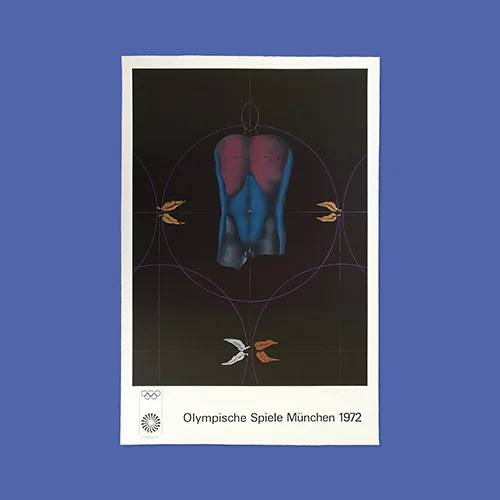Edition Olympia 1972, Munich Art Posters - Case Study
- M72C
- Nov 17, 2023
- 6 min read
Updated: Feb 26
[ M72CS : 002 ]
For the first time in the history of the Olympic Games, prominent artists from all over the world produced a series of original art posters interpreting the spirit of the Olympics for the Games of the XXth Olympiad, Munich 1972.

Initial brief. In early summer, 1967 Willi Daume, the president of the Organising Committee along with Erhardt D. Stiebner (of Bruckmann Verlag) conceived the idea to represent the intertwining of sports and art worldwide and to utilise the posters of famous artists for this purpose. These graphics were to published and distributed both in Germany and abroad. The two basic ideas were to relate artistic activity to the Olympic Games and engage the best artists to collaborate. An internationally known artist should be engaged exclusively for the design of the official Olympic poster. These ideas appeared in the early summer of 1967 and so the first contacts were made with Pablo Picasso, Joan Miro and Marc Chagall.
Simultaneously the OC discussed another idea: to collect works of famous artists with those of younger artists into a large series and to distribute them all over the world in an art-orientated publicity
campaign.
–
Sonne und Himmel / Kraft und Natur.
Victor Vasarely's colour graduations of Coordt Von Mannstein's Olympic emblem - 15 colour serigraphs produced in editions of 200 and 3000.
Guidelines.
The overall concept for the visual image, desired for the Games of the XXth Olympiad was ready in October, 1967, and with it a concept for the publicity with posters. Now the OC could work out guidelines which would distinguish all the art posters as parts of a unified series and would connect the series to the
unified visual image desired for the Games. Every artist had to adhere to the following specifications: Unified poster size – 64 cm x 102 cm consisting of a – Text on the bottom (64 cm wide, 15 cm high) and a – Picture on the vertical rectangle.
Unified text
– "Olympische Spiele München 1972" Including – the Olympic rings and the – official emblem at the bottom
Unified lettering
– Univers 55 (sans serif) – Height approx. 3 cm.
The Editions. The art posters were produced in three different editions:
Original graphics (1st) - [ Originalgrafik ]
Hand-printed by the artist from the original plate on high-quality paper, signed and limited to 200 copies per design. • High quality print finishes (embossing, deckle edges etc.) • Serigraph or Lithograph • Hand-signed and numbered in pencil 1-200 / 200 • Generally have the printer's name displayed under the emblem • 250gsm - 300gsm approx.
Original posters (2nd) - [ Original-Plakat ]
Hand finished further impressions from the same original plate on slightly lower quality paper; the plate is signed, but not numbered. The original poster edition should not exceed 4,000 copies per design. • Serigraph or Lithograph • Generally have the printer's name displayed under the emblem • 200gsm - 225gsm approx.
Reproductions of the original graphic (Open-Edition) - [ Reproducktionen ]
Produced by off-set or photogravure process on poster paper. The number of copies depended upon the requirements. • Depending on the print run these may be marked with 'Reproduktions-Plakat' • 120gsm approx. * No Kokoschka 2nd edition was produced * Hundertwasser editions produced : 200 / mechanically numbered 1-3999 of 3999 / 1 of 35,000
Examples of the Editions.
1st Edition
–
Paul Wunderlich Poster / Hand-signed and numbered edition of 200 / Printer's name / Metallic, embossed finish / Deckle edge
2nd Edition
–
Josef Albers Poster / Printer's name / Plate signed by the artist / Serigraph print quality
Open Edition
–
Max Bill Poster / Printed in Germany / Reproduktions-Plakat / Plate signed by the artist / Litho print quality
The chosen artists.
Valerio Adami, Italy / Josef Albers, Germany / Otmar Alt, Germany / Horst Antes, Germany / Shusaku Arakawa, Japan / Max Bill, Switzerland / Eduardo Chillida, Spain / Allan D'Arcangelo, USA / Alan Davie, Great Britain / Piero Dorazio, Italy / Hans Hartung, Germany / David Hockney, Great Britain / Friedensreich Hundertwasser, Austria / Allen Jones, Great Britain / R. B. Kitaj, USA / Oskar Kokoschka, Austria / Charles Lapicque, France / Jacob Lawrence, USA / Jan Lenica, Poland / Marino Marini, Italy / Peter Phillips, Great Britain / Serge Poliakoff, Russia / Richard Smith, Great Britain / Pierre Soulages, France / Victor Vasarely, Hungary / Tom Wesselmann, USA / Fritz Winter, Germany / Paul Wunderlich, Germany Release.
The first seven sheets of the Olympic Edition appeared in October, 1969. Four more series, each with seven posters, appeared at regular intervals. More and more young and unknown artists were presented from series to series.
1969.
–
Poliakoff / Hartung / Marini / Kokoschka / Lapicque / Lenica / Winter
1970.
–
Antes / Arakawa / Chillida / Vasarely / Dorazio / Jones / Soulages
The first 15 posters were made available internationally in late 1970. Kennedy Graphics, New York was the official distributor in the United States, Canada and Japan. These works were often marked with 'Printed in Germany for Kennedy Graphics Inc.'
1971.
– Albers / Alt / D'Arcangelo / Bill / Hockney / Kitaj / Wesselmann
1972.
– Adami / Davie / Hundertwasser / Lawrence / Phillips / Smith / Wunderlich
Fifth series (young, German) artists. Gernot Bubenik / Günter Desch / Alfonso Hüppi / Hans-Jurgen Kleinhammes / Werner Nöfer / Wolfgang Petrick / Gerd Winner / E. G. Willikens (1st Edition portfolio cover)
– Winner / Nöfer / Hüppi / Kleinhammes / Petrick / Desch / Bubenik
Man and the Sea exhibition, Kiel. One other art poster was produced by Bruckmann for the Games, this time for an exhibition in Kiel by acclaimed surrealist artist Salvador Dali. This work was published by the magistrate of the city of Kiel as part of the accompanying cultural programme.

Setting the Prices.
The varying production costs for each print did not allow a uniform price for all posters of a certain value level. The printing costs fluctuated according to the number of colors and the technique used. The varying artists' fees and their differing price levels on the art market caused even more price categories. Thus the company determined only a price limit for the entire series within which then the individual sheet would be separately calculated. This limit was kept as low as possible for reasons of public relations and cultural politics:
Original graphics 300 to 800 DM / Original posters 30 to 70 DM / Reproductions 10 DM The printing works.
The artists could pick their own printing plants and supervise the printing of the original graphics themselves.
Dietz-Offizin, Lengmoos (Hundertwasser, Lawrence)
Domberger, Stuttgart (Kokoschka)
Herbert Bauer, Stuttgart (Winter)
Imprimerie d'Arte, Paris (Hartung)
Ives-Silmann, New Haven, CT (Albers)
Kelpra-Studio, London (Kitaj)
Kroll, Munich (Adami, Arakawa, Bill, D'Arcangelo, Lenica, Vasarely, Wesselmann)
Larese, St. Gallen (Chillida, Poliakoff)
Laube, Munich (Alt)
Matthieu AG, Zurich (Antes, Davie, Dorazio, Hockney, Jones, Phillips, Smith, Wunderlich)
Mourlot Imprimeur, Paris (Lapicque, Marini, Soulages)
Printing Techniques.
For the first and second editions.
Valerio Adami : 9 colour Serigraph / Josef Albers : 3 colour Serigraph / Otmar Alt : 12 colour Serigraph / Horst Antes : 7 colour Lithograph / Shusaku Arakawa : 16 colour Serigraph / Max Bill : 9 colour Serigraph / Eduardo Chillida : 1 colour Lithograph / Allan D'Arcangelo : 4 colour Serigraph / Alan Davie : 12 colour Lithograph / Piero Dorazio : 7 colour Lithograph / Hans Hartung : 4 colour Lithograph / David Hockney : 8 colour Lithograph / Friedensreich Hundertwasser : 30 colour Serigraph / Allen Jones : 15 colour Lithograph / R. B. Kitaj : 11 colour Serigraph / Oskar Kokoschka : 20 colour Serigraph / Charles Lapicque : 5 colour Lithograph / Jacob Lawrence : 12 colour Serigraph / Jan Lenica : 13 colour Serigraph / Marino Marini : 20 colour Lithograph / Peter Phillips : 16 colour combination / Serge Poliakoff : 7 colour Lithograph / Richard Smith : 6/7 colour Lithograph / Pierre Soulages : 3 colour Lithograph / Victor Vasarely : 16 colour Serigraph / Tom Wesselmann : 6 colour Serigraph / Fritz Winter : 6 colour Lithograph / Paul Wunderlich : 8 colour Lithograph / Olympia Emblem, Victor Vasarely : 15 colour Serigraph
Shop.

